- Hospitality Industry

What is the hospitality industry? All your questions answered

March 28, 2024 •
20 min reading
The hospitality industry is a large subsection within the service industry and is comprised of four main areas : Food & beverage, travel & tourism, lodging, and recreation. As examples, the F&B category includes restaurants, bars, and food trucks; travel & tourism covers different forms of transportation and travel agencies; lodging varies from hotel resorts to hostels; recreation refers to leisure activities such as sports, wellness, and entertainment. While all sectors are interconnected and reliant on each other, many of these hospitality sectors are quickly evolving due to new technologies and changing customer mindsets.
Known for being one of the main industries that is easily impacted by external forces, many questions have recently come up regarding the state of hospitality today. What trends are shaping its future? What makes it still one of the world's fastest-growing industries? How can it remain competitive? How to deal with the post-Covid staff shortages?
Read on to find out the experts' guide on what is happening in this exciting, evolving, and resilient sector.
A brief history of hospitality
How fast is the hospitality industry growing, hospitality industry overview: key statistics, hospitality industry growth: what trends are driving it, what major challenges is the hospitality industry facing, travel and hospitality industry: top trends, what the top ceos are saying about the future of the hospitality and tourism industry, what leaders can do to ensure hospitality businesses remain competitive, the hospitality management careers of tomorrow, future of hospitality: what's on the horizon for hospitality & tourism professionals, how has the hospitality industry evolved since its origins.
Derived from the latin word “hospes”, meaning host (one who provides lodging or entertainment for a guest or visitor), hospitality has its roots in ancient history. The ancient Greeks used the word "xenia" to define the sacred rule of hospitality: the generosity and courtesy shown to those who are far from home or associates of the person bestowing guest-friendship. Away from home, surrounded by strangers and yet feeling welcome.
Although the original concept of hospitality has remained largely unchanged since its origins (meeting travelers’ basic needs such as providing food and accommodation), the idea of building hotels for the sole purpose of hosting guests emerged alongside technological advances and better means of transportation towards the end of the 18th century. Since then, the sector been in constant expansion due to the very concept of hospitality being applicable to any sector that deals with customer service and satisfaction.

Along with the overall economy, the global hospitality industry has enjoyed a spurt of massive growth over the last decade since the end of the financial crisis. According to the World Bank , the global economy has grown at a pace of more than three percent per year up until the global pandemic hit in 2019/20. Due to pent up demand during the beginning of the COVID-19 pandemic there was an acceleration of the global economy in 2021 of 5.5 percent growth, however it is set to decelerate to 4.1 percent in 2022 and 3.2 percent in 2023, arriving back at pre-pandemic levels.
This unprecedented expansion over the last decade has benefited the hospitality and tourism industry by stimulating the world population’s travel activity, adding countless room nights in both leisure and business travel .
1. International arrivals have increased from 900 million to more than 1.3 billion over a span of just ten years.
Not only has this boosted the number of rooms on offer, but has also led to a major contribution of global employment opportunities. Covid-19 had a severe impact and international tourist arrivals according to figures from UNTWO , which after years of steady annual growth saw a staggering -73% drop in arrivals in 2020 and -71% in 2021 due to travel restrictions in response to Covid-19.
All in all 2020 is recognized as the worst year in tourism history with 1 billion fewer international arrivals and US $ 1.1 trillion in international tourism receipts. Around -74% drop according to the latest data from World Tourism Organization (UNWTO) a level of 30 years ago.
However, so far the travel industry has seen an extremely positive bounce back. New data from UNTWO found that, overall, international arrivals reached 80% of pre-pandemic levels; in the first quarter of 2023.
Tourism figures are heading in the right direction as an estimated 235 million tourists traveled internationally in the first three months, more than double the same period of 2022.
2. The World Travel and Tourism Council ( WTTC ) names the hospitality industry’s importance as a main driver in global value creation.
Recent figures published by the WTTC found that in 2022 the Travel & Tourism sector made a contribution of 7.trillion USD to the global economy, 7.6% of the global GDP and 23% below pre-pandemic levels.
3. The hospitality and travel industry accounts for one out of every ten employment opportunities.
Bringing the number of people earning their living in the sector to a remarkable 330 million in 2022.
In 2022, there were 22 million new jobs, representing a 7.9% increase on 2021, and only 11.4% below 2019.
The rise in revenue does not only benefit international companies and hotel owners, but also acts as a major factor in job creation for local populations and destinations. As of the latest data, around 173 million people were employed in the hotel and motel industry before the Covid-19 pandemic hit.
The WTTC forecast that there will be an additional 126 million jobs created between now and 2032.
4. The overall growth in the travel and tourism industry stands at +5.8% Vs. Overall GDP +2.7%.
According to the Hospitality Global Market Report 2023 the global hospitality marketgrew from $4,390.59 billion in 2022 to $4,699.57 billion in 2023 at a compound annual growth rate (CAGR) of 7.0%.
This large growth rate is in part the bounce back from global restrictions on travel. The market is expected to continue growing but at a slower rate due to the global economic situation with a Compound Annual Growth Rate (GAGR) of +5,8% forecasted between 2022 and 2032.
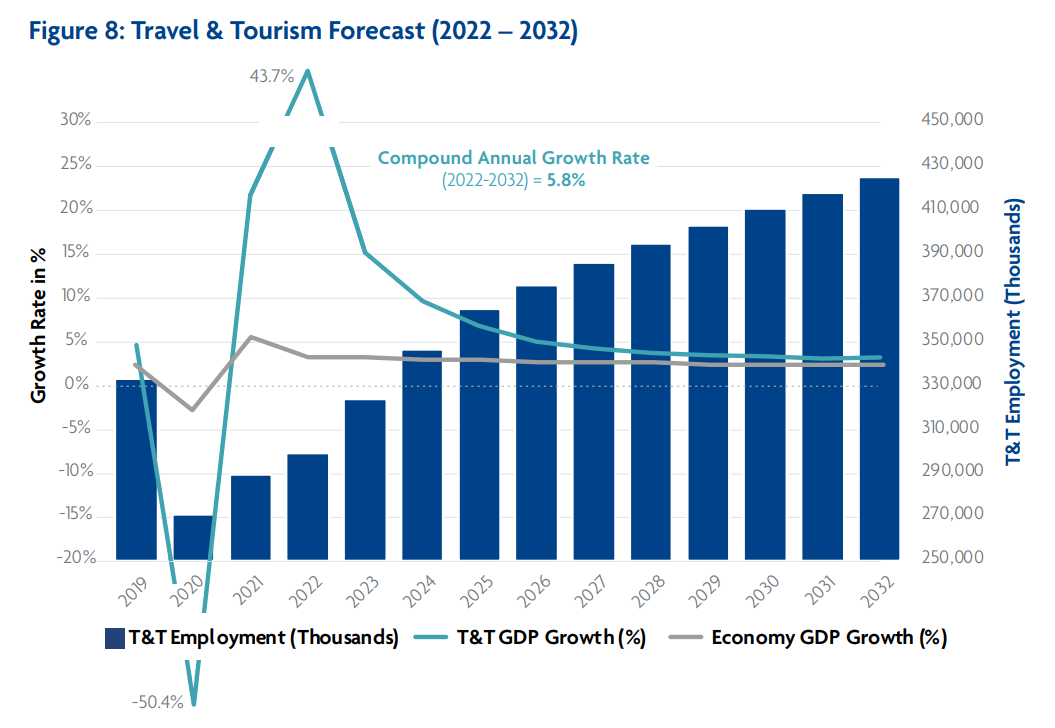
Image source: World Travel & Tourism Council, Travel & Tourism Economic Impact 2022
1. The global economy growth has created positive momentum in the sector by contributing to the overall income per capita.
Since 2009, the global GDP has constantly increased at an average pace of almost two percent per annum, leading to a growing demand for both international and domestic travel spending. Whilst the Covid-19 pandemic led to a shock -2.81% decline in GDP in 2020 according to Statista , 2022 figures and subsequent projections for 2023 show year-on-year growth.
2. Airfares have consistently become more affordable over the last three decades, but will this last?
Thanks to lower fuel prices, carrier competition and the rise of low-cost airlines . While these are not happy news for the airline industry, which is using ancillary fees to increase profit margins, it benefits travelers who can get more from their purchasing power. However the emerging global energy crisis could put a halt to such a trend and airlines could pass on the price hikes to the consumer, which will in turn impact consumer travel behaviour.
3. Corporate travel is yet another contributor to the healthy outlook and is projected to keep growing.
In China and India, the growth of business travel is particularly steep due to the relentless pace of economic expansion in this part of the world.
4. The health and wellness segment has boomed in recent years.
There has never been so much appetite among the public for wellness and the escapism travel can offer from life’s stresses - the pandemic taught us to slow down and not to take our health for granted.
The global consumer health and wellness market is a $1.5 trillion market growing at 5 to 10 percent a year, and, according to a recent McKinsey survey, people around the world are increasingly interested in taking care of themselves and are planning to spend more money on wellness products and services.
5. Hotel operators are seeking to expand their portfolios through targeted acquisitions of smaller regional chains.
Mergers and Acquisitions activity in hospitality has somewhat cooled over the last few years , with operators seeking to expand business in a more controlled way.
1. The threat of climate change
The threat of climate change will adversely impact many major tourist destinations. Threats resulting from climate change, safety and security issues, as well as unprecedented migration streams are tomorrow’s game changers. The main challenges for the hospitality industry are the lack of predictability and the magnitude of such events – and how fast the industry can react and adapt. Hybrid operations might be one of the hospitality 4ndustry’s possible responses to increased risks.
2. Industry consolidation
Corporate consolidation has led to increasing concentration of size and power among the top players. Hotel operators will seek to expand their portfolios through targeted acquisitions of smaller regional chains. While the ultimate goal is to create value through cross-organizational synergies, this development also comes with downsides, as the management of structures with a diverse selection of geographies and a plethora of brands generates more complexity and threatens to increase overall rigidity.
Marriott and Hilton remain the world’s most valuable hospitality brands, valued in 2023 at $53.5B and $37.99B respectively.
3. New competition from tech and digital players
Are major technology firms such as Google or Facebook threatening to replace hotel brands by offering technological solutions and creating novel markets to attract new types of customers? Thanks to their control over all types of data related to customer behavior both off- and online, tech behemoths could oust traditional incumbents into niche markets. Companies that fail to identify their niche are at risk of becoming mere revenue generators for technology companies. Some big enough brands may survive, but their business will get tougher .
4. Skilled talent shortage
As the accommodation and restaurant industry is creating jobs at the fastest rate of any sector in the economy according to the International Labor Organization, fuelling this growth with the right skilled labor is yet another concern for owners. Attracting and retaining younger generations of hospitality professionals will require a lot of flexibility and attention from hoteliers in the future.
5. Energy crisis
The global energy crisis is the perfect storm of multiple factors causing a huge surge in energy demand which the limited global resources are struggling to fulfil. Added to this is Russia’s invasion of Ukraine, one of the main suppliers to Europe. Whilst the world grapples with accelerating the development of green infrastructure, the hospitality industry has an even bigger incentive to make efforts to switch to renewable energy sources where possible, not only as our environmental social responsibility but also to reduce the reliance on particular states which fuels the weaponization of energy.
6. Supply chain issues
Supply chain issues have affected most of the world, although Europe was the hardest hit, according to data from the 2022 State of the Third-Party Logistics Industry Report by Extensiv.
These issues are ongoing and are triggered by undulating demand, price volatility and uncertainty. The hospitality industry is affected on an operational level when bottlenecks cause delays on delivering food & drink, bed linen, housekeeping products and other replenishable goods. Running out of these items means giving customers a disappointing experience and leaving a poor impression that could diminish the business’s reputation.
7. Economic downturn
According to the UNWTO Panel of Experts , the economic situation remains the main factor weighing on the effective recovery of international tourism in 2023, with high inflation and rising oil prices translating into higher transport and accommodation costs. As a result, tourists are expected to increasingly seek value for money and travel closer to home.
Is there a silver lining? Well, we know that economic downturns make way for innovation and entrepreneurship ! The public needs new solutions for new problems, so now may just be the time to start thinking of your next business venture.

Travelers' expectations have greatly evolved especially now that technology is taking center stage in every area of guest experience. As 2024 progresses, hospitality professionals are gearing up to leverage various innovations and strategies that promise to reshape customer satisfaction and industry standards. Here are hospitality trends 2024 elevating guest satisfaction and driving business growth.
1. Towards sustainable travel
The reasons we desire to travel are many and include experiencing the beautiful things the world has to offer, meeting new people, supporting local culture, etc. In fact, more than 33,000 travelers across 35 countries and territories have been surveyed in Booking.com's Sustainable Travel Report 2023 . 76% of global travelers say they want to travel sustainably over the next 12 months.
Ecotourism is all about intentionally organising travel plans in a way that doesn't harm the environment. Thankfully, sustainability is a major driving force in the hospitality industry, with hotels and restaurants welcoming eco-friendly initiatives to minimize their environmental footprint.
A growing number of hotels are rising to the challenge of running a sustainable business. Beyond plastic usage , general waste production, food waste, usage of local produce, energy and water consumption, and many other factors are to be considered for operators that are serious about their claim. Going one step further, the term sustainability is also often used not only for environmental protection but also corporations’ approach to managing their people and their finances. All across the board, resources of all kinds are being used more efficiently in the hospitality industry and while various strategies are being adopted by hotels, a paradigm shift is becoming more recognizable.
From implementing energy-efficient technologies to sourcing locally produced ingredients, businesses are prioritizing sustainability to appeal to eco-conscious travelers—which is echoed in the next point.
2. Wellness for holistic hospitality
A lot of guests today are looking for experiences that promote physical and mental well-being. Hotels that have embraced wellness travel can now cater to this demand by offering activities like yoga retreats, on-site spa treatments , fitness centers with cutting-edge equipment, and healthy dining options.
Creating a relaxing and stress-free environment through thought-out design elements can contribute to a holistic wellness encounter. Travelers return from their trip feeling refreshed, rejuvenated, and ready to take on their day-to-day life.
The wellness tourism market is projected to reach well over $1,700 billion, in accordance with Precedence Research . Even so, investing in the health niche is beneficial for guests and financially rewarding for businesses.
3. Enhanced experiences with advanced technology
The integration of artificial intelligence and other technologies is reshaping the hospitality industry. AI-powered chatbots are being employed for personalized customer service to provide instant assistance and support to guests throughout their stay. Whether it's answering inquiries, making reservations, or addressing issues, chatbots offer convenience for both guests and staff.
On the other hand, predictive analytics algorithms help with demand forecasting and pricing optimization. AI is gaining traction in the hospitality industry because of its enhanced data analytics of consumer behavior patterns and improved ability to meet client demands. Data-driven personalization enables hotels to tailor offerings and marketing messages to individual guest preferences.
Global Market Estimates predict that between 2021 and 2026, the niche will rise at a compound annual growth rate (CAGR) of approximately 10%. Robots are also making inroads into the hospitality industry in automating housekeeping tasks, food delivery, and concierge services. While robots cannot replace humans entirely, they free up hotel staff to focus on higher-level guest relations and contribute to operational efficiency.
Why contactless technology?
Contactless technology has become essential since the COVID-19 pandemic as a way to offer guests a safer, more convenient experience. These systems allow users to network with devices or complete transactions without physical contact, often achieved through short-range wireless communication, like tapping your phone to pay at a store.
Mobile check-in/out, digital room keys, and touchless payment options are now standard in most, if not all big hotel chains. This trend is expected to persist beyond 2024 as businesses prioritize contactless solutions to not only minimize the spread of germs but also meet a growing consumer preference for minimal physical contact.
Immersive virtual reality experiences
Hotels are using Virtual Reality or VR to offer immersive virtual tours so guests can preview accommodations and amenities before booking. While virtual reality offers the ultimate virtual experience, guest relations managers appreciate accessibility concerns.
For those without VR headsets, 360° videos provide a panoramic view of hotel space with just a phone or computer. Interactive floor plans also let you virtually walk through the hotel for a solid understanding of the layout. This has completely changed the way guests explore and engage with hospitality offerings.
VR-enhanced experiences, such as virtual city tours or immersive dining experiences create memorable moments for guests, too. VR technology will become more accessible in the future; therefore, its adoption in hospitality is a no-brainer.
Make each customer feel special with personalization
The global leader in employee and customer experience, Medallia Research Inc. , reports that 61% of consumers are willing to pay more for hyper-personalized experiences. Guests crave guest-centric services that cater to their every whim. This is not just about remembering names but also using guest data to anticipate preferences and offer tailored services .
Information can include previous booking history, preferred room types, special requests, dietary restrictions, leisure activities, and feedback from past stays. With collated information, hospitality teams can customize everything from room amenities to dining recommendations to boost guest satisfaction and loyalty.
Embracing experiential tourism
If you've been bitten by the travel bug and want something extraordinary, you should definitely consider experiential travel. The idea behind this travel concept is to forge a deeper connection with a given destination than can usually be had from traditional leisure holidays so guests experience it as authentically as possible.
These often involve an element of adventure, whether cultural, culinary, or spiritual; as such, tours mainly focus on less "touristy spots." For instance, after the pandemic, family ski vacations to Japan are preferable compared traditional choices like Aspen or Canada. Add-on experiences such as samurai sword-fighting or temple tours add an extra dimension to the travel experience.
Experiential tourism is now high on nearly every traveler's wish list because trips aren't restricted to international pursuits. This trend presents an opportunity for hotels to partner with local businesses and offer unique experiences like cooking classes, cultural excursions, and outdoor adventures. Such offerings create memorable and enriching guest experiences.
Integrating storytelling marketing
As the name suggests, storytelling marketing is a powerful tool for captivating audiences and creating emotional connections with brands. Hospitality businesses are now crafting authentic narratives to showcase their unique offerings, heritage, and values to resonate with guests on a deeper level. This type of marketing can also set the stage for experiential travel by providing context and inspiration for visitors.
Through captivating narratives, travelers can visualize themselves in the destination, immersing themselves in its culture, history, and natural beauty. Storytelling paints a vivid picture of the travel experience enough to spark curiosity and ignite wanderlust among potential travelers. When utilized properly, hotels and restaurants can differentiate themselves from their competitors and boost brand loyalty.
Technology integration for advanced data security
Data breaches can be devastating. Guests entrust hotels with sensitive personal information and as the hospitality industry becomes increasingly reliant on technology, data security is crucial. Hotels must implement robust cybersecurity measures to protect guest data and maintain trust.
This is where technology integration comes in; from cloud-based property management systems to smart room automation. It can ensure data security by implementing advanced encryption protocols and access controls across all integrated systems, safeguarding guest information from unauthorized access or breaches.
Further, continuous monitoring and regular updates of integrated technology systems can help detect and mitigate potential security threats. Embracing innovative technologies and staying abreast of industry trends can future-proof hotel business operations and boost guests' trust.
Commitment to net positivity
Sustainability is no longer a niche concern; it's an expectation for many travelers. Hotels that prioritize green practices like energy efficiency, water conservation, and local sourcing reduce their environmental footprint besides appealing to eco-conscious guests. The industry is moving beyond simply being sustainable to aiming for net positivity, with regenerative tourism that gives back to the environment.
Management with a vision
None of the discussed hospitality trends 2024 are possible without effective management. Leadership in the hotel industry requires a clear vision for the future, an ability to adapt to changing trends, and a commitment to continuous improvement. Hospitality leaders must invest in their own development and the teams they lead can ensure their businesses remain competitive and thrive in the years to come.

As an industry that depends on a stable environment in order to successfully operate - societal and environmental changes are having a greater impact on hospitality businesses compared to other industries. A recent global survey among CEOs by PwC has shown that heads of hospitality and leisure companies are notably less confident about their companies’ prospects for revenue growth in the near future than their counterparts in other sectors.
With disruptors in the industry, a wave of consolidation, and many external factors impacting their operations, hotel operators must find new ways to overcome these hurdles. Solutions to future challenges that companies are currently coming up with are the result of new thinking among the world’s business leaders and CEOs.
In a crowded field of competitors, hotels must find ways to distinguish themselves and position their property as distinctive destinations for customers , to develop preferences and loyalty in order to drive direct bookings. To do so, hotels must offer more highly personalized experiences that anticipate and go beyond the needs of their target customers – and count on word of mouth and allegiance to not only retain their customer base, but also grow it with more potential customers.
We have been a super good hospitality group for the last 50 years. We are not shying away from it. We are shifting and expanding the hospitality notion to Augmented Hospitality. We are being even more audacious and going one step further by saying: Since people want to be recognized, want to have something extremely personalized, why don't we try going from Augmented Hospitality to a Lifestyle Augmented Hospitality player? Sébastien Bazin, Chairman and CEO of Accor (Source: Accor TV - New Accor Strategy).
Other ways that are often discussed when dealing with the impending changes are the implementation of new technologies, training employees to move away from standard SOPs to become true high-touch experience providers and modernizing the service offering towards individualization and “lifestyle” to create true differentiation.

Fully take advantage of technology and personalization to create experiences
A generational shift towards how travelers are consuming hospitality services is making hotels evolve from being mere suppliers of accommodation to experience providers, leading to a need for outstanding customer relationships across all stages of their customer booking journeys .
Focus on talent acquisition and retention
From targeted recruitment efforts to a meaningful interview process and to the actual hiring and onboarding, organizations that are well-equipped to recruit in the era of millennials think holistically about the overall experience delivered to potential hires .
Embrace sustainability as part of your business model
As a result, a growing number of international hotel companies have developed sustainability and corporate social responsibility strategies . These initiatives can be perceived as the beginning of a paradigm shift toward a more positive and conscious form of hospitality which is highly valued among consumers today.

Reshaping the future of hospitality jobs
Over the past two decades, the hospitality industry has experienced significant growth, with international arrivals doubling from 600 million to over 1.4 billion in 2016 .
In 2023 however, in the wake of the global pandemic and facing increasing economic uncertainty hospitality has shown that it is resilient and a sector that consumers are just not willing forego entirely. Travel and tourism is an integral part of our lives therefore even as the global economy retracts the industry will always bounce back. This ability to withstand difficult times makes it a viable sector to launch a career for anyone with a hospitality mindset and appreciation for top-level service, culture, and leisure experiences.
It's clear that the industry is evolving and adapting all the time, making it a fantastic career opportunity for the problem solvers and innovators of tomorrow. Hospitality Management will provide a career rich in experiences, human connection, personal development and comes with many perks.
Employers across the board are looking for professionals with a combination of both hard and soft skills . In hospitality, developing skills such as cultural awareness, multitasking, customer service and communications is paramount to effectively deliver outstanding customer experiences.
The increasing complexity of the hospitality sector and evolution of its modus operandi - due to the expanded use of technology and data, the evolution of business models with the separation of management from operations or the ever-increasing trend of brands becoming publishers - is leading to the creation of new job profiles , such as asset managers, data scientists or content marketing specialists.
The Covid-19 crisis has underlined the global importance of the travel and tourism industry economically as well as its interconnection with other industries. From small tour operators to multinational hotel chains and major airlines, everyone in the industry has been impacted and continue to reset and recover.
To every negative repercussions of a crisis there is also some positive change that could be foreseen for the future. The World Economic Forum’s recent “Rebuilding Travel and Tourism panel” at the “Sustainable Development Impact Summit” explored the intersection of consumer consciousness, acceleration of technology and destination management and found some solutions that could have the potential to reshape the way we market, manage and plan our travel:
- Travelers are becoming more impact-conscious
- Tourists are looking for experiences in nature
- Digital solutions are improving sustainability
- Long-term progress requires cooperation
The end result is in an industry that will recover as it is an essential part of modern human lives that derive much pleasure and discovery from it. It is simultaneously undergoing huge digital transformation and other shifts to adapt to consumer sentiment, therefore a career in hospitality won't necessarily be a quiet one, but it will be an exciting adventure with a multitude of possible career paths to explore.

Keep reading

Hospitality management careers list for hotel enthusiasts
May 07, 2024

How Airbnb and short-term rentals reshape rural and urban communities
May 02, 2024

What does a Hotel Manager do?
The best step-up for a successful career in hospitality
Our Master's in Hospitality Management is an internationally recognized MSc qualification. You will have a choice of four academic routes: CSR & Sustainable Transformation, Finance, Real Estate & Consulting, Food & Beverage Management, or Luxury Experience Management. These routes enable you to specialize through your studies.
This is a title
This is a text
- Bachelor Degree in Hospitality
- Pre-University Courses
- Master’s Degrees & MBA Programs
- Executive Education
- Online Courses
- Swiss Professional Diplomas
- Culinary Certificates & Courses
- Fees & Scholarships
- Bachelor in Hospitality Admissions
- EHL Campus Lausanne
- EHL Campus (Singapore)
- EHL Campus Passugg
- Host an Event at EHL
- Contact our program advisors
- Join our Open Days
- Meet EHL Representatives Worldwide
- Chat with our students
- Why Study Hospitality?
- Careers in Hospitality
- Awards & Rankings
- EHL Network of Excellence
- Career Development Resources
- EHL Hospitality Business School
- Route de Berne 301 1000 Lausanne 25 Switzerland
- Accreditations & Memberships
- Privacy Policy
- Legal Terms
© 2024 EHL Holding SA, Switzerland. All rights reserved.
The magazine of Glion Institute of Higher Education
- What is tourism and hospitality?

Tourism and hospitality are thriving industries encompassing many sectors, including hotels, restaurants, travel, events, and entertainment.
It’s an exciting and dynamic area, constantly evolving and adapting to changing customer demands and trends.
The tourism and hospitality industry offers a diverse range of career opportunities that cater to various interests, skills, and qualifications, with positions available from entry-level to executive management.
The booming tourism and hospitality industry also offers job security and career growth potential in many hospitality-related occupations.
What is tourism?
Tourism is traveling for leisure, pleasure, or business purposes and visiting various destinations, such as cities, countries, natural attractions, historical sites, and cultural events, to experience new cultures, activities, and environments.
Tourism can take many forms, including domestic, or traveling within your country, and international tourism, or visiting foreign countries.
It can also involve sightseeing, adventure tourism , eco-tourism, cultural tourism, and business tourism, and it’s a huge contributor to the global economy, generating jobs and income in many countries.
It involves many businesses, including airlines, hotels, restaurants, travel agencies, tour operators, and transportation companies.
What is hospitality?
Hospitality includes a range of businesses, such as hotels, restaurants, bars, resorts, cruise ships, theme parks, and other service-oriented businesses that provide accommodations, food, and beverages.
Hospitality is all about creating a welcoming and comfortable environment for guests and meeting their needs.
Quality hospitality means providing excellent customer service, anticipating guests’ needs, and ensuring comfort and satisfaction. The hospitality industry is essential to tourism as both industries often work closely together.
What is the difference between tourism and hospitality?
Hospitality and tourism are both related and separate industries. For instance, airline travel is considered as part of both the tourism and hospitality industries.
Hospitality is a component of the tourism industry, as it provides services and amenities to tourists. However, tourism is a broader industry encompassing various sectors, including transportation, accommodation, and attractions.
Transform your outlook for a successful career as a leader in hospitality management
This inspiring Bachelor’s in hospitality management gives you the knowledge, skills, and practical experience to take charge and run a business

Is tourism and hospitality a good career choice?
So, why work in hospitality and tourism? The tourism and hospitality industry is one of the fastest-growing industries in the world, providing a colossal number of job opportunities.
Between 2021 and 2031, employment in the hospitality and tourism industry is projected to expand faster than any other job sector, creating about 1.3 million new positions .
A tourism and hospitality career can be a highly rewarding choice for anyone who enjoys working with people, has a strong service-oriented mindset, and is looking for a dynamic and exciting career with growth potential.
Growth and job opportunities in tourism and hospitality
Tourism and hospitality offers significant growth and job opportunities worldwide. The industry’s increasing demand for personnel contributes to economic and employment growth, particularly in developing countries.
The industry employs millions globally, from entry-level to high-level management positions, including hotel managers, chefs, tour operators, travel agents, and executives.
It provides diverse opportunities with great career progression and skill development potential.
Career paths in tourism and hospitality

There are many career opportunities in tourism management and hospitality. With a degree in hospitality management, as well as relevant experience, you can pursue satisfying and fulfilling hospitality and tourism careers in these fields.
Hotel manager
Hotel managers oversee hotel operations. They manage staff, supervise customer service, and ensure the facility runs smoothly.
Tour manager
Tour managers organize and lead group tours. They work for tour companies, travel agencies, or independently. Tour managers coordinate a group’s transportation, accommodations, and activities, ensuring the trip runs to schedule.
Restaurant manager
Restaurant managers supervise the daily operations of a restaurant. They manage staff, ensure the kitchen runs smoothly, and monitor customer service.
Resort manager
Resort managers supervise and manage the operations of a resort. From managing staff to overseeing customer service, they ensure the entire operation delivers excellence.
Entertainment manager
Entertainment managers organize and oversee entertainment at venues like hotels or resorts. They book performers, oversee sound and lighting, and ensure guests have a great experience.
Event planner
Event planners organize and coordinate events, such as weddings, conferences, and trade shows. They work for event planning companies, hotels, or independently.
vent planners coordinate all aspects of the event, from the venue to catering and decor.
Travel consultant
Travel consultants help customers plan and book travel arrangements, such as flights, hotels, and rental cars. They work for travel agencies or independently. Travel consultants must know travel destinations and provide superb customer service.
What skills and qualifications are needed for a career in tourism and hospitality?

Tourism and hospitality are rewarding industries with growing job opportunities. Necessary qualifications include excellent skills in communication, customer service, leadership, problem-solving, and organization along with relevant education and training.
Essential skills for success in tourism and hospitality
A career in the tourism and hospitality industry requires a combination of soft and technical skills and relevant qualifications. Here are some of the essential key skills needed for a successful career.
- Communication skills : Effective communication is necessary for the tourism and hospitality industry in dealing with all kinds of people.
- Customer service : Providing excellent customer service is critical to the success of any tourism or hospitality business . This requires patience, empathy, and the ability to meet customers’ needs.
- Flexibility and adaptability : The industry is constantly changing, and employees must be able to adapt to new situations, be flexible with their work schedules, and handle unexpected events.
- Time management : Time management is crucial to ensure guest satisfaction and smooth operations.
- Cultural awareness : Understanding and respecting cultural differences is essential in the tourism and hospitality industry, as you’ll interact with people from different cultures.
- Teamwork : Working collaboratively with colleagues is essential, as employees must work together to ensure guests have a positive experience.
- Problem-solving : Inevitably, problems will arise, and employees must be able to identify, analyze, and resolve them efficiently.
- Technical skills : With the increasing use of technology, employees must possess the necessary technical skills to operate systems, such as booking software, point-of-sale systems, and social media platforms.
Revenue management : Revenue management skills are crucial in effectively managing pricing, inventory, and data analysis to maximize revenue and profitability
Master fundamental hospitality and tourism secrets for a high-flying career at a world-leading hospitality brand
With this Master’s degree, you’ll discover the skills to manage a world-class hospitality and tourism business.

Education and training opportunities in tourism and hospitality
Education and training are vital for a hospitality and tourism career. You can ensure you are prepared for a career in the industry with a Bachelor’s in hospitality management and Master’s in hospitality programs from Glion.
These programs provide a comprehensive understanding of the guest experience, including service delivery and business operations, while developing essential skills such as leadership, communication, and problem-solving. You’ll gain the knowledge and qualifications you need for a successful, dynamic, and rewarding hospitality and tourism career.
Preparing for a career in tourism and hospitality
To prepare for a career in tourism and hospitality management, you should focus on researching the industry and gaining relevant education and training, such as a hospitality degree . For instance, Glion’s programs emphasize guest experience and hospitality management, providing students with an outstanding education that launches them into leading industry roles.
It would help if you also worked on building your communication, customer service, and problem-solving skills while gaining practical experience through internships or part-time jobs in the industry. Meanwhile, attending industry events, job fairs, and conferences, staying up-to-date on industry trends, and networking to establish professional connections will also be extremely valuable.
Finding jobs in tourism and hospitality
To find jobs in tourism and hospitality, candidates can search online job boards, and company career pages, attend career fairs, network with industry professionals, and utilize the services of recruitment agencies. Hospitality and tourism graduates can also leverage valuable alumni networks and industry connections made during internships or industry projects.
Networking and building connections in the industry
Networking and building connections in the hospitality and tourism industry provide opportunities to learn about job openings, meet potential employers, and gain industry insights. It can also help you expand your knowledge and skills, build your personal brand, and establish yourself as a valuable industry professional.
You can start networking by attending industry events, joining professional organizations, connecting with professionals on social media, and through career services at Glion.
Tips for success in tourism and hospitality

Here are tips for career success in the tourism and hospitality industry.
- Gain relevant education and training : Pursue a hospitality or tourism management degree from Glion to gain fundamental knowledge and practical skills.
- Build your network : Attend industry events, connect with colleagues and professionals on LinkedIn, and join relevant associations to build your network and increase your exposure to potential job opportunities.
- Gain practical experience : Look for internships, part-time jobs, or volunteering opportunities to gain practical experience and develop relevant skills.
- Develop your soft skills : Work on essential interpersonal skills like communication, empathy, and problem-solving.
- Stay up-to-date with industry trends : Follow industry news and trends and proactively learn new skills and technologies relevant to tourism and hospitality.
- Be flexible and adaptable : The tourism and hospitality industry constantly evolves, so be open to change and to adapting to new situations and challenges.
- Strive for excellent guest service : Focus on delivering exceptional guest experiences as guest satisfaction is critical for success.
Tourism and hospitality offer many fantastic opportunities to create memorable guest experiences , work in diverse and multicultural environments, and develop transferable skills.
If you’re ready to embark on your career in tourism and hospitality, Glion has world-leading bachelor’s and master’s programs to set you up for success.
Photo credits Main image: Maskot/Maskot via Getty Images

LIVING WELL

HOSPITALITY UNCOVERED

BUSINESS OF LUXURY

LISTENING TO LEADERS

WELCOME TO GLION.
This site uses cookies. Some are used for statistical purposes and others are set up by third party services. By clicking ‘Accept all’, you accept the use of cookies
Privacy Overview
See how Cvent can solve your biggest event challenges. Watch a 30-minute demo.

What Is the Hospitality Industry? Your Complete Guide

What does hospitality mean? What is the hospitality industry, exactly? Where and how did it begin? This post answers all those questions and more as we explore the past, present, and future of hospitality. As we dive deeper into what the industry entails, you’ll discover how hospitality impacts employers, employees, economies, consumers, the environment, and so much more. Whether you’re curious about which businesses are part of the industry, what they do, or how to start a career in hospitality, you’ve come to the right place.
What is the hospitality industry?
The hospitality industry is a massive business sector. Casting a broad umbrella, it encompasses all economic and business activities that rely upon or contribute to travel and tourism. Hospitality-focused businesses like hotels and travel agencies contribute directly by providing essential services that enable travel and tourism. Suppliers, transportation services, and catering companies may indirectly contribute by delivering the goods and services necessary to keep the industry running; however, they do not solely rely on hospitality for their revenue.
Because the hospitality industry is so expansive, it includes a diverse spectrum of companies, businesses, and experts. Even with so much variety, most hospitality businesses fall into one of four categories.
1. Travel & tourism (T&T)
Although many people think travel and tourism are synonymous with hospitality, that’s not quite the case. More accurately, T&T is a specific category within the hospitality industry. It includes airlines, shuttle services, travel agents, destination marketing organizations (DMOs) , and other businesses or services that help facilitate the physical travel necessary for tourism. Those working in T&T help drive tourists, workers, and businesses to new destinations.
2. Accommodation
One of the largest and most diverse parts of the hospitality industry is the accommodation sector, which includes everything from lodging to event grounds and special event venues. Numerous different types of hotels and venues fall into this sector, including:
- Chain hotels
- Extended stay properties
- Boutique hotels
- Conference and convention centers
- Wedding venues
- Casinos/casino suites
3. Food & beverage (F&B)
Most hotels and resorts offer their guests some form of food or dining option. Whether operating a café, buffet breakfast, or full-service restaurant, food and beverage services are integrated directly into many hospitality-based businesses. Stand-alone F&B providers, like restaurants or food trucks, operate independently, but they also have a part to play in the local hospitality scene.
Event catering, quick-service establishments, full-service restaurants, and limited-service F&B are powerful revenue drivers contributing to the hospitality industry. In addition to serving in-house hotel guests, F&B is a critical component of meetings and events, from private parties, like birthdays or weddings, to large-scale corporate events .
4. Recreation & entertainment
Because businesses in the hospitality industry often rely on consumers’ disposable income, they market to customers’ desire for entertainment that refreshes the mind, body, and spirit. In addition to lodging, travel services, and culinary delights, hospitality is full of indoor and outdoor recreation.
Bars, nightclubs, theaters, stadiums, museums, zoos, and other attractions often act as special event venues and tourist attractions, helping to drive a destination’s economy . Spectacular outdoor spaces, including our national and state parks , attract travelers from near and far to feed their local markets.
Whether providing a memorable meal or a relaxing day at the spa, the true purpose of hospitality is to ensure that the customer has an enjoyable experience —whatever they do.
But how did it all get started? How far back do the roots of the hospitality industry actually go?

When did the hospitality industry begin?
Although hospitality doesn’t have a designated start date, its traditions date back thousands of years. Ancient symbols of hospitality exist worldwide, with the oldest signs discovered in French caves dating back to 15,000 BCE . Historians and archeologists believe early humans designed the caves to welcome guests and greet visiting tribes.
Xenia, a phrase translating to “the sacred rule of hospitality,” is another early sign of the tradition. In ancient Greece, the custom expressed the law or expectation that hosts would offer protection and kindness to strangers . The Greeks understood that a satisfactory hospitality experience relied on hosts respecting their guests and vice versa. Furthermore, they believed displaying proper hospitality was “fundamental to human civilized life.” Modern hospitality may not look like it did thousands of years ago, but its purpose remains the same.
Is the hospitality industry growing?
Pre-pandemic, the hotel and motel industries (i.e., hospitality) employed approximately 173 million workers . In our primarily post-pandemic world, the hospitality industry and its partners remain massive global employers. 2022 brought 22 million new jobs to the sector, representing an almost 8% increase since 2021. In 2023, the hospitality positions accounted for one of every ten available jobs .
Although many hospitality-focused businesses (e.g., hotels and restaurants) still face staffing shortages , the industry remains one of the largest global employment sectors. From 2022-2023, the international hospitality industry’s value grew at a compound annual growth rate of 7% . The rebound illustrates consumers’ desire to travel again and return to in-person events after restrictions were lifted. Paralleling this demand increase, the World Travel and Tourism Council estimates that the hospitality industry will create 126 million more jobs by 2032 .
How does the hospitality industry impact the environment?
In 2022, the hospitality industry was responsible for approximately 1% of global carbon emissions . Single-use plastics, high water consumption, energy usage, and excess waste are just a few ways hotels negatively affect their local environment and the overall climate.
To demonstrate a commitment to sustainability , social responsibility, and shifting consumer preferences, the industry is becoming greener through robust global initiatives and innovative day-to-day practices, like these eco-friendly hotel ideas . As consumer attitudes towards environmental conservation and sustainability strengthen, being eco-friendly is no longer optional for most businesses; it’s necessary.
Why work in hospitality?
If you enjoy making other people happy, hospitality might be right for you. It’s an industry where employees work together to create a welcoming atmosphere, satisfy customers, impress hotel guests , and create an exceptional visitor experience. With hotel, events, dining, planning, travel, custom service, and a wide variety of other roles available, there’s an opportunity for every worker and every personality type.
Hospitality is also a dynamic, fast-paced, and ever-changing field. Just as every guest is different, so is every day working in the industry. Whether working in a hotel or nightclub, you get to encounter diverse types of people with varying backgrounds from all over the world. As you connect with various guests and strive to meet their needs, you’ll get exposed to new cultures and expand your life experience.
Additionally, hospitality offers more flexible scheduling than many other industries, as hospitality businesses often operate outside of traditional 9 a.m. to 5 p.m. office hours. Many young people flock to hotels, restaurants, and similar businesses because of the work-life balance they provide. Working in the industry also comes with a diverse range of perks, such as discounted travel, competitive pay rates, and numerous opportunities to advance your career.
Become an expert on all things hospitality
How do you get a job in the hospitality industry?
There are many different paths you can take to begin a hospitality career. While some employees start at an entry-level position and work up the ranks, others translate their past professional experience into a hospitality-focused career. Increase your chances of building a successful career in the hospitality industry by:
1. Identifying which hospitality sector best suits you
The hospitality industry includes diverse careers and professions, making it an excellent sector for workers with various skills and personality types. Whether you’re an introvert who prefers to work alone or a bubbly, conversational individual, hospitality has something for everyone. If you want to work in a hotel, consider which department or position best fits you.
- Front desk: Front-facing, customer-focused positions, great for outgoing personality types
- Housekeeping: Back-of-the-house positions, perfect for task-oriented or meticulous employees
- F&B: Front-facing and back-of-house positions available, often working in a busy, high-stress environment
- Maintenance: Skill-based and goal-focused positions that require big-picture thinkers with excellent task-management skills
- Meetings and events: A range of primarily forward-facing positions available for event planners, organizers, coordinators, and more
2. Knowing where to look
As customer service lies at the heart of hospitality, it’s common for professionals to turn to members of their local network for references, recommendations, and referrals. Many entry-level hospitality jobs are shared through local and employee referrals, the hiring manager’s professional network, or an individual’s social media accounts.
If you already know where you want to work, get to know the people there. Introduce yourself to the management team at hotels, restaurants, and other venues that interest you. If you’re not sure where to start, there are a variety of hospitality employment resources available, including:
- Online advertisements. Online job ads are especially beneficial if you’re new to the industry or a particular destination. If you lack first-person word-of-mouth recommendations, breaking into your local industry may feel intimidating. Keep an eye out for online ads on job boards, local news sites, and search engine results to streamline your search.
- Social media pages. Follow venue Facebook pages, join local hospitality groups, and keep a close eye on the Instagram pages of the hotels or destinations where you want to work. Regularly check social media, scanning for links to external job sites or brand listings.
- Hospitality Online
- iHireHospitality
- Hospitality Crossing
- Hospitality Confidential
- Wyndham Careers
- Hyatt Careers
- Marriott International Careers
- Jobs at Hilton
- IHG Careers
- Accor Careers
- OYO Careers
- Staffing agencies. Staffing and temporary work agencies are fantastic resources for helping individuals get their foot through the door. Although there are various hospitality-specific staffing agencies, like Hospitality Staffing Solutions , it’s also common for local staffing agencies to work directly with nearby hotels as they help fill entry-level positions in guest service, housekeeping, maintenance, and other departments.
3. Expanding your hospitality knowledge
Become a go-to person for all things hospitality, from industry trends to the latest marketing techniques. Stay current on the latest to remain relevant in an increasingly competitive field.
4. Keeping up with industry certifications
Having credentials can significantly impact how quickly you land your dream travel job. Show other hospitality professionals that you’re serious about a career in the industry by holding various certifications, like HubSpot Academy’s Inbound Marketing Certification , a certificate in hospitality revenue management (CRHM), or ServSafe certifications for those involved on the F&B side.
5. Determining your career path
After exploring the wide and wonderful world of hospitality, pick a career path you’re enthusiastic about. Instead of thinking about where to start, consider where you’d like to go in the industry. Visualizing where you want to end up can help determine which steps you should take to advance your career down a path that speaks to you.
Now you know what the hospitality industry is and why it matters!
With a better understanding of how far hospitality extends and its immense influence worldwide, it’s easy to see why the industry is growing. To learn more, join us as we examine the most significant trends impacting the hospitality industry in 2023 .

Kim Campbell
Kim is a full-time copy and content writer with many years of experience in the hospitality industry. She entered the hotel world in 2013 as a housekeeping team member and worked her way through various departments before being appointed to Director of Sales. Kim has championed numerous successful sales efforts, revenue strategies, and marketing campaigns — all of which landed her a spot on Hotel Management Magazine’s “Thirty Under 30” list.
Don’t be fooled though; she’s not all business! An avid forest forager, post-apocalyptic fiction fan, and free-sample-fiend, Kim prides herself on being well-rounded.

More Reading
Congratulations to the 2024 cvent excellence awards finalists, how to market to corporate event planners, what is a hotel business plan, and why you need one.
Subscribe to our newsletter

- German Soccer Sensation Finds a Home with the Bobcats
- From Air Force Veteran to the Middle of the Atlantic
- Career Assistance 44 Years After Graduation
- Admissions by Day. Filmmaking by Night.
- Admissions Process
- Alumni Updates
- Bryant & Stratton College News
- Business Degrees
- Career Services
- College Life
- Continuing Education
- Criminal Justice Studies
- Degree Insights
- Education Programs
- Financial Aid
- Healthcare Degrees
- Human Resources
- Military Relations
- Online Education
- Social Media
- Student Services
- Technology & Design
- Video Posts

Tourism vs. Hospitality - Decoding the Differences
Bryant & Stratton College Blog Staff

The hospitality and tourism industries are closely connected, but they are not the same thing. Though both connect to travel and leisure, these two industries have distinct differences that need to be understood if you are considering a degree or career in the field. By knowing how they are different, you can choose the right degree that will help you achieve your desired career path.
What is the Difference Between Tourism and Hospitality?
Hospitality is a field that focuses on providing accommodations to visitors at hospitality-related industries, such as hotels, motels, restaurants, cruise ships, country clubs, casinos, and convention centers, while tourism is focused on providing quality attractions and events in order to entice tourists to come.
For each of these fields to be successful, they focus on specific ways to keep people satisfied so they will return. Hospitality businesses must build strong relationships with their guests to not only prevent them from going to a competitor, but to keep them coming back. Many tourism businesses are classified as hospitality businesses as they must also have meaningful relationships, but they are more focused on traveling activities that may include heavy planning and marketing.
What are the Similarities Between Tourism and Hospitality?
Both the hospitality and tourism industries focus on serving people when they travel. These are highly competitive and always-changing fields that require people to be able to adapt to a changing market and work environment. Both tourism and hospitality professionals need to be good marketers to draw potential clients and customers to their industries.
What Jobs are there in the Travel and Tourism Industry?
The travel and tourism industry focuses on helping people plan and execute their travel arrangements. Some jobs in tourism management include:
Travel Agent
A travel agent is a great career path for people who majored in tourism. Travel agents work with their clients to plan their trips, so they must be highly organized and have a knowledge of the travel industry so they can book resorts, cruise ships, airline travel, and more for their clients.
Travel agents also assist clients with their travel budgets by calculating travel costs and helping clients choose trips and adventures that fit within their budget. They also can assist clients with getting their passports or other paperwork in order so they can legally travel.
The pay for a travel agent varies because they often earn commissions based on the trips and services they book, as well as the setting they work in. Travel agents can work independently or work with a travel agency, depending on the demand in their area.
Flight Attendant
A flight attendant works in an airline to help travelers get to their destination safely and comfortably. While travelers often see the simple work of the flight attendant, such as passing out snacks and collecting garbage, flight attendants are also trained on how to help protect passenger safety if something goes wrong.
Flight attendants need to be good at working with people, even those who are not in a good mood or who face frustration when they travel. One of the main benefits of this profession is getting to travel to and explore many destinations around the world.
The Bureau of Labor Statistics estimates that the demand for flight attendants will increase by 17% from 2019 to 2029, so it is a great time to pursue this career path.
What Jobs Are There in the Hospitality Industry?
Jobs within hotels, restaurants, and event centers tend to fall in the hospitality industry category. Hotel managers, event managers, hotel clerks, bar managers, and chefs are just a few examples in this industry, with details as follows:
Hotel Manager
A hotel manager makes sure that guests are comfortable during their stay in a hotel or resort. They may have to arrange for blankets or other amenities to be taken to hotel rooms, oversee the employees of the hotel, and ensure that supplies, like soap and shampoo, are ordered in a timely manner. On a resort property, the hotel manager may also be in charge of entertainment. The exact setting or location will dictate exact duties and responsibilities for this role. Overall, it is the manager's job to handle customer service needs that pop up during a guest's stay.
Event Manager
An event manager or event planner helps plan large events to ensure all attendees enjoy the experience. These individuals, like others in the hospitality industry, need to be highly organized. Event managers will plan all of the details, gather bids from venues and vendors, coordinate transportation for attendees, arrange for food, and even connect with local hotels to ensure people have a place to stay. They help their clients manage and maximize their budgets and ensure that everything is ready when the special event starts.
The BLS estimates that this career will grow 8% from 2019-2029, which is much faster than average. Approximately 10,800 new jobs will be created in this field, so it is a great time to consider pursuing a position in event management.
A concierge is employed by a resort or event center to help guests book entertainment and enjoy their stay more fully. These professionals need to know their local area well so they can connect guests to the entertainment options that best fit their tastes and desires for their trip.
Concierge professionals tend to be employed by high-end resorts and luxury hotels. Distinguished guests expect to have someone to help them book their services and are willing to tip well for this service.
Restaurant and Catering Professionals
The hospitality industry is also the industry that covers restaurants and catering services. While those interested in opening a restaurant or catering business will also need to explore foodservice training, training in hospitality will help them understand the customer service side of this industry. These professionals can work anywhere where food and beverage are prepared and served, including hotels, resorts, and restaurants.
Start Your Hospitality or Tourism Journey Today!
If the tourism and hospitality industries are appealing to you, then finding a career in these fields or industry may require further education. Bryant & Stratton College has a number of hospitality degree programs , including associate degrees and diplomas, that can help you get started in this field. Reach out to the admissions team at Bryant & Stratton College to learn more about these programs and to determine if they are the right fit for your career path.
Related Articles

Travel, Tourism & Hospitality
Global tourism industry - statistics & facts
What are the leading global tourism destinations, digitalization of the global tourism industry, how important is sustainable tourism, key insights.
Detailed statistics
Total contribution of travel and tourism to GDP worldwide 2019-2033
Number of international tourist arrivals worldwide 1950-2023
Global leisure travel spend 2019-2022
Editor’s Picks Current statistics on this topic
Leading global travel markets by travel and tourism contribution to GDP 2019-2022
Travel and tourism employment worldwide 2019-2033
Further recommended statistics
- Basic Statistic Total contribution of travel and tourism to GDP worldwide 2019-2033
- Basic Statistic Travel and tourism: share of global GDP 2019-2033
- Basic Statistic Leading global travel markets by travel and tourism contribution to GDP 2019-2022
- Basic Statistic Global leisure travel spend 2019-2022
- Premium Statistic Global business travel spending 2001-2022
- Premium Statistic Number of international tourist arrivals worldwide 1950-2023
- Basic Statistic Number of international tourist arrivals worldwide 2005-2023, by region
- Basic Statistic Travel and tourism employment worldwide 2019-2033
Total contribution of travel and tourism to gross domestic product (GDP) worldwide in 2019 and 2022, with a forecast for 2023 and 2033 (in trillion U.S. dollars)
Travel and tourism: share of global GDP 2019-2033
Share of travel and tourism's total contribution to GDP worldwide in 2019 and 2022, with a forecast for 2023 and 2033
Total contribution of travel and tourism to GDP in leading travel markets worldwide in 2019 and 2022 (in billion U.S. dollars)
Leisure tourism spending worldwide from 2019 to 2022 (in billion U.S. dollars)
Global business travel spending 2001-2022
Expenditure of business tourists worldwide from 2001 to 2022 (in billion U.S. dollars)
Number of international tourist arrivals worldwide from 1950 to 2023 (in millions)
Number of international tourist arrivals worldwide 2005-2023, by region
Number of international tourist arrivals worldwide from 2005 to 2023, by region (in millions)
Number of travel and tourism jobs worldwide from 2019 to 2022, with a forecast for 2023 and 2033 (in millions)
- Premium Statistic Global hotel and resort industry market size worldwide 2013-2023
- Premium Statistic Most valuable hotel brands worldwide 2023, by brand value
- Basic Statistic Leading hotel companies worldwide 2023, by number of properties
- Premium Statistic Hotel openings worldwide 2021-2024
- Premium Statistic Hotel room openings worldwide 2021-2024
- Premium Statistic Countries with the most hotel construction projects in the pipeline worldwide 2022
Global hotel and resort industry market size worldwide 2013-2023
Market size of the hotel and resort industry worldwide from 2013 to 2022, with a forecast for 2023 (in trillion U.S. dollars)
Most valuable hotel brands worldwide 2023, by brand value
Leading hotel brands based on brand value worldwide in 2023 (in billion U.S. dollars)
Leading hotel companies worldwide 2023, by number of properties
Leading hotel companies worldwide as of June 2023, by number of properties
Hotel openings worldwide 2021-2024
Number of hotels opened worldwide from 2021 to 2022, with a forecast for 2023 and 2024
Hotel room openings worldwide 2021-2024
Number of hotel rooms opened worldwide from 2021 to 2022, with a forecast for 2023 and 2024
Countries with the most hotel construction projects in the pipeline worldwide 2022
Countries with the highest number of hotel construction projects in the pipeline worldwide as of Q4 2022
- Premium Statistic Airports with the most international air passenger traffic worldwide 2022
- Premium Statistic Market value of selected airlines worldwide 2023
- Premium Statistic Global passenger rail users forecast 2017-2027
- Premium Statistic Daily ridership of bus rapid transit systems worldwide by region 2023
- Premium Statistic Number of users of car rentals worldwide 2019-2028
- Premium Statistic Number of users in selected countries in the Car Rentals market in 2023
- Premium Statistic Carbon footprint of international tourism transport worldwide 2005-2030, by type
Airports with the most international air passenger traffic worldwide 2022
Leading airports for international air passenger traffic in 2022 (in million international passengers)
Market value of selected airlines worldwide 2023
Market value of selected airlines worldwide as of May 2023 (in billion U.S. dollars)
Global passenger rail users forecast 2017-2027
Worldwide number of passenger rail users from 2017 to 2022, with a forecast through 2027 (in billion users)
Daily ridership of bus rapid transit systems worldwide by region 2023
Number of daily passengers using bus rapid transit (BRT) systems as of April 2023, by region
Number of users of car rentals worldwide 2019-2028
Number of users of car rentals worldwide from 2019 to 2028 (in millions)
Number of users in selected countries in the Car Rentals market in 2023
Number of users in selected countries in the Car Rentals market in 2023 (in million)
Carbon footprint of international tourism transport worldwide 2005-2030, by type
Transport-related emissions from international tourist arrivals worldwide in 2005 and 2016, with a forecast for 2030, by mode of transport (in million metric tons of carbon dioxide)
Attractions
- Premium Statistic Leading museums by highest attendance worldwide 2019-2022
- Basic Statistic Most visited amusement and theme parks worldwide 2019-2022
- Basic Statistic Monuments on the UNESCO world heritage list 2023, by type
- Basic Statistic Selected countries with the most Michelin-starred restaurants worldwide 2023
Leading museums by highest attendance worldwide 2019-2022
Most visited museums worldwide from 2019 to 2022 (in millions)
Most visited amusement and theme parks worldwide 2019-2022
Leading amusement and theme parks worldwide from 2019 to 2022, by attendance (in millions)
Monuments on the UNESCO world heritage list 2023, by type
Number of monuments on the UNESCO world heritage list as of September 2023, by type
Selected countries with the most Michelin-starred restaurants worldwide 2023
Number of Michelin-starred restaurants in selected countries and territories worldwide as of July 2023
Online travel market
- Premium Statistic Online travel market size worldwide 2017-2028
- Premium Statistic Estimated desktop vs. mobile revenue of leading OTAs worldwide 2023
- Premium Statistic Number of aggregated downloads of leading online travel agency apps worldwide 2023
- Basic Statistic Market cap of leading online travel companies worldwide 2023
- Premium Statistic Estimated EV/Revenue ratio in the online travel market 2024, by segment
- Premium Statistic Estimated EV/EBITDA ratio in the online travel market 2024, by segment
Online travel market size worldwide 2017-2028
Online travel market size worldwide from 2017 to 2023, with a forecast until 2028 (in billion U.S. dollars)
Estimated desktop vs. mobile revenue of leading OTAs worldwide 2023
Estimated desktop vs. mobile revenue of leading online travel agencies (OTAs) worldwide in 2023 (in billion U.S. dollars)
Number of aggregated downloads of leading online travel agency apps worldwide 2023
Number of aggregated downloads of selected leading online travel agency apps worldwide in 2023 (in millions)
Market cap of leading online travel companies worldwide 2023
Market cap of leading online travel companies worldwide as of September 2023 (in million U.S. dollars)
Estimated EV/Revenue ratio in the online travel market 2024, by segment
Estimated enterprise value to revenue (EV/Revenue) ratio in the online travel market worldwide as of April 2024, by segment
Estimated EV/EBITDA ratio in the online travel market 2024, by segment
Estimated enterprise value to EBITDA (EV/EBITDA) ratio in the online travel market worldwide as of April 2024, by segment
Selected trends
- Premium Statistic Global travelers who believe in the importance of green travel 2023
- Premium Statistic Sustainable initiatives travelers would adopt worldwide 2022, by region
- Premium Statistic Airbnb revenue worldwide 2017-2023
- Premium Statistic Airbnb nights and experiences booked worldwide 2017-2023
- Premium Statistic Technologies global hotels plan to implement in the next three years 2022
- Premium Statistic Hotel technologies global consumers think would improve their future stay 2022
Global travelers who believe in the importance of green travel 2023
Share of travelers that believe sustainable travel is important worldwide in 2023
Sustainable initiatives travelers would adopt worldwide 2022, by region
Main sustainable initiatives travelers are willing to adopt worldwide in 2022, by region
Airbnb revenue worldwide 2017-2023
Revenue of Airbnb worldwide from 2017 to 2023 (in billion U.S. dollars)
Airbnb nights and experiences booked worldwide 2017-2023
Nights and experiences booked with Airbnb from 2017 to 2023 (in millions)
Technologies global hotels plan to implement in the next three years 2022
Technologies hotels are most likely to implement in the next three years worldwide as of 2022
Hotel technologies global consumers think would improve their future stay 2022
Must-have hotel technologies to create a more amazing stay in the future among travelers worldwide as of 2022
- Premium Statistic Travel and tourism revenue worldwide 2019-2028, by segment
- Premium Statistic Distribution of sales channels in the travel and tourism market worldwide 2018-2028
- Premium Statistic Inbound tourism visitor growth worldwide 2020-2025, by region
- Premium Statistic Outbound tourism visitor growth worldwide 2020-2025, by region
Travel and tourism revenue worldwide 2019-2028, by segment
Revenue of the global travel and tourism market from 2019 to 2028, by segment (in billion U.S. dollars)
Distribution of sales channels in the travel and tourism market worldwide 2018-2028
Revenue share of sales channels of the travel and tourism market worldwide from 2018 to 2028
Inbound tourism visitor growth worldwide 2020-2025, by region
Inbound tourism visitor growth worldwide from 2020 to 2022, with a forecast until 2025, by region
Outbound tourism visitor growth worldwide 2020-2025, by region
Outbound tourism visitor growth worldwide from 2020 to 2022, with a forecast until 2025, by region
Further reports
Get the best reports to understand your industry.
Mon - Fri, 9am - 6pm (EST)
Mon - Fri, 9am - 5pm (SGT)
Mon - Fri, 10:00am - 6:00pm (JST)
Mon - Fri, 9:30am - 5pm (GMT)
When you walk into your hotel, the staff will greet you by name, know your travel preferences, and anticipate your needs. Almost every aspect of your stay will be personalized to your tastes, and you can reconfigure your room at any time to make it suitable for work, exercise, socializing, or sleep. For all leading hotel brands, the well-being of both guests and employees—and the health of the planet—will be top priorities. Welcome to the hospitality industry’s next normal.
The view to 2030 and beyond
Hospitality that benefits people and the planet, more on the future of travel and hospitality.

Three innovations to solve hotel staffing shortages


Travel startups: Disruption from within?

The path toward eco-friendly travel in China

Accelerating the transition to net-zero travel

How to ‘ACE’ hospitality recruitment
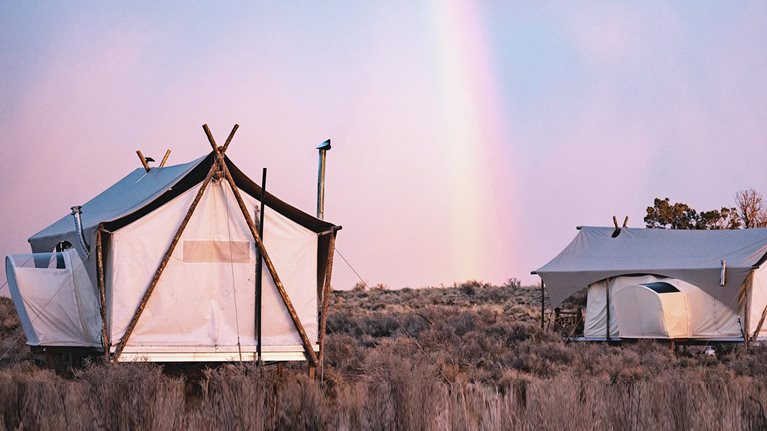
Rebooting customer experience to bring back the magic of travel
The next normal explores the future of grocery, college, video entertainment, and more., latest editions of the next normal, the future of biotech: ai-driven drug discovery, could this be a glimpse into life in the 2030s, the future of video entertainment: immersive, gamified, and diverse.
An official website of the United States government
- Special Topics
Travel and Tourism
Travel and tourism satellite account for 2018-2022.
The travel and tourism industry—as measured by the real output of goods and services sold directly to visitors—increased 21.0 percent in 2022 after increasing 53.6 percent in 2021, according to the most recent statistics from BEA’s Travel and Tourism Satellite Account.
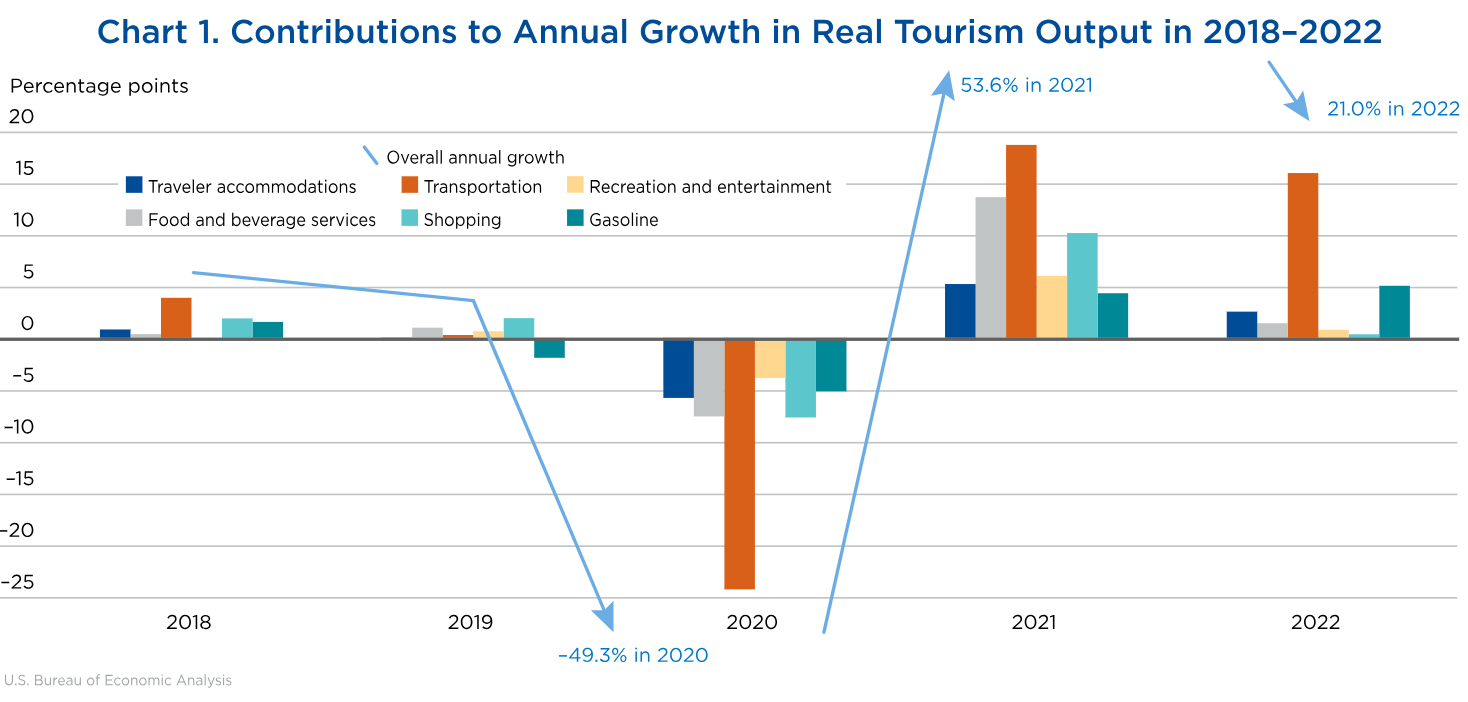
Data & Articles
- U.S. Travel and Tourism Satellite Account for 2018–2022 By Hunter Arcand and Paul Kern - Survey of Current Business April 2024
- "U.S. Travel and Tourism Satellite Account for 2015–2019" By Sarah Osborne - Survey of Current Business December 2020
- "U.S. Travel and Tourism Satellite Account for 2015-2017" By Sarah Osborne and Seth Markowitz - Survey of Current Business June 2018
- Tourism Satellite Accounts 1998-2019
- Tourism Satellite Accounts Data A complete set of detailed annual statistics for 2017-2021 is coming soon -->
- Article Collection
Documentation
- Product Guide
Previously Published Estimates
- Data Archive This page provides access to an archive of estimates previously published by the Bureau of Economic Analysis. Please note that this archive is provided for research only. The estimates contained in this archive include revisions to prior estimates and may not reflect the most recent revision for a particular period.
- News Release Archive
What is Travel and Tourism?
Measures how much tourists spend and the prices they pay for lodging, airfare, souvenirs, and other travel-related items. These statistics also provide a snapshot of employment in the travel and tourism industries.
What’s a Satellite Account?

- TTSA Sarah Osborne (301) 278-9459
- News Media Connie O'Connell (301) 278-9003 [email protected]

Want to create or adapt books like this? Learn more about how Pressbooks supports open publishing practices.
Chapter 1. History and Overview
Learning Objectives
- Specify the commonly understood definitions of tourism and tourist
- Classify tourism into distinct industry groups using North American Industry Classification Standards (NAICS)
- Define hospitality
- Gain knowledge about the origins of the tourism industry
- Provide an overview of the economic, social, and environmental impacts of tourism worldwide
- Understand the history of tourism development in Canada and British Columbia
- Analyze the value of tourism in Canada and British Columbia
- Identify key industry associations and understand their mandates
What Is Tourism?
Before engaging in a study of tourism , let’s have a closer look at what this term means.
Definition of Tourism
There are a number of ways tourism can be defined, and for this reason, the United Nations World Tourism Organization (UNWTO) embarked on a project from 2005 to 2007 to create a common glossary of terms for tourism. It defines tourism as follows:
Tourism is a social, cultural and economic phenomenon which entails the movement of people to countries or places outside their usual environment for personal or business/professional purposes. These people are called visitors (which may be either tourists or excursionists; residents or non-residents) and tourism has to do with their activities, some of which imply tourism expenditure ( United Nations World Tourism Organization , 2008).
Using this definition, we can see that tourism is the movement of people for a number of purposes (whether business or pleasure).
Definition of Tourist
Building on the definition of tourism, a commonly accepted description of a tourist is “someone who travels at least 80 km from his or her home for at least 24 hours, for business or leisure or other reasons” (LinkBC, 2008, p.8). The United Nations World Tourism Organization (1995) helps us break down this definition further by stating tourists can be:
- Domestic (residents of a given country travelling only within that country)
- Inbound (non-residents travelling in a given country)
- Outbound (residents of one country travelling in another country)
The scope of tourism, therefore, is broad and encompasses a number of activities.
Spotlight On: United Nations World Tourism Organization (UNWTO)
UNWTO is the United Nations agency responsible “for the promotion of responsible, sustainable and universally accessible tourism” (UNWTO, 2014b). Its membership includes 156 countries and over 400 affiliates such as private companies and non-governmental organizations. It promotes tourism as a way of developing communities while encouraging ethical behaviour to mitigate negative impacts. For more information, visit the UNWTO website : http://www2.unwto.org/.
NAICS: The North American Industry Classification System
Given the sheer size of the tourism industry, it can be helpful to break it down into broad industry groups using a common classification system. The North American Industry Classification System (NAICS) was jointly created by the Canadian, US, and Mexican governments to ensure common analysis across all three countries (British Columbia Ministry of Jobs, Tourism and Skills Training, 2013a). The tourism-related groupings created using NAICS are (in alphabetical order):
- Accommodation
- Food and beverage services (commonly known as “F & B”)
- Recreation and entertainment
- Transportation
- Travel services
These industry groups are based on the similarity of the “labour processes and inputs” used for each (Government of Canada, 2013). For instance, the types of employees and resources required to run an accommodation business — whether it be a hotel, motel, or even a campground — are quite similar. All these businesses need staff to check in guests, provide housekeeping, employ maintenance workers, and provide a place for people to sleep. As such, they can be grouped together under the heading of accommodation. The same is true of the other four groupings, and the rest of this text explores these industry groups, and other aspects of tourism, in more detail.

The Hospitality Industry
When looking at tourism it’s important to consider the term hospitality . Some define hospitality as “t he business of helping people to feel welcome and relaxed and to enjoy themselves” (Discover Hospitality, 2015, ¶ 3). Simply put, the hospitality industry is the combination of the accommodation and food and beverage groupings, collectively making up the largest segment of the industry. You’ll learn more about accommodations and F & B in Chapter 3 and Chapter 4, respectively.
Before we seek to understand the five industry groupings in more detail, it’s important to have an overview of the history and impacts of tourism to date.
Global Overview
Origins of tourism.
Travel for leisure purposes has evolved from an experience reserved for very few people into something enjoyed by many. Historically, the ability to travel was reserved for royalty and the upper classes. From ancient Roman times through to the 17th century, young men of high standing were encouraged to travel through Europe on a “grand tour” (Chaney, 2000). Through the Middle Ages, many societies encouraged the practice of religious pilgrimage, as reflected in Chaucer’s Canterbury Tales and other literature.
The word hospitality predates the use of the word tourism , and first appeared in the 14th century. It is derived from the Latin hospes , which encompasses the words guest, host , and foreigner (Latdict, 2014). The word tourist appeared in print much later, in 1772 (Griffiths and Griffiths, 1772). William Theobald suggests that the word tour comes from Greek and Latin words for circle and turn, and that tourism and tourist represent the activities of circling away from home, and then returning (Theobald, 1998).
Tourism Becomes Business
Cox & Kings, the first known travel agency, was founded in 1758 when Richard Cox became official travel agent of the British Royal Armed Forces (Cox & Kings, 2014). Almost 100 years later, in June 1841, Thomas Cook opened the first leisure travel agency, designed to help Britons improve their lives by seeing the world and participating in the temperance movement. In 1845, he ran his first commercial packaged tour, complete with cost-effective railway tickets and a printed guide (Thomas Cook, 2014).
The continued popularity of rail travel and the emergence of the automobile presented additional milestones in the development of tourism. In fact, a long journey taken by Karl Benz’s wife in 1886 served to kick off interest in auto travel and helped to publicize his budding car company, which would one day become Mercedes Benz (Auer, 2006). We take a closer look at the importance of car travel later this chapter, and of transportation to the tourism industry in Chapter 2.
Fast forward to 1952 with the first commercial air flights from London, England, to Johannesburg, South Africa, and Colombo, Sri Lanka (Flightglobal, 2002) and the dawn of the jet age, which many herald as the start of the modern tourism industry. The 1950s also saw the creation of Club Méditérannée (Gyr, 2010) and similar club holiday destinations, the precursor of today’s all-inclusive resorts.
The decade that followed is considered to have been a significant period in tourism development, as more travel companies came onto the scene, increasing competition for customers and moving toward “mass tourism, introducing new destinations and modes of holidaying” (Gyr, 2010, p. 32).
Industry growth has been interrupted at several key points in history, including World War I, the Great Depression, and World War II. At the start of this century, global events thrust international travel into decline including the September 11, 2001, attack on the World Trade Center in New York City (known as 9/11), the war in Iraq, perceived threat of future terrorist attacks, and health scares including SARS, BSE (bovine spongiform encephalopathy), and West Nile virus (Government of Canada, 2006).
At the same time, the industry began a massive technological shift as increased internet use revolutionized travel services. Through the 2000s, online travel bookings grew exponentially, and by 2014 global leader Expedia had expanded to include brands such as Hotels.com, the Hotwire Group, trivago, and Expedia CruiseShip Centers, earning revenues of over $4.7 million (Expedia Inc., 2013).
A more in-depth exploration of the impact of the online marketplace, and other trends in global tourism, is provided in Chapter 14. But as you can already see, the impacts of the global tourism industry today are impressive and far reaching. Let’s have a closer look at some of these outcomes.
Tourism Impacts
Tourism impacts can be grouped into three main categories: economic, social, and environmental. These impacts are analyzed using data gathered by businesses, governments, and industry organizations.
Economic Impacts
According to a UNWTO report, in 2011, “international tourism receipts exceeded US$1 trillion for the first time” (UNWTO, 2012). UNWTO Secretary-General Taleb Rifai stated this excess of $1 trillion was especially important news given the global economic crisis of 2008, as tourism could help rebuild still-struggling economies, because it is a key export and labour intensive (UNWTO, 2012).
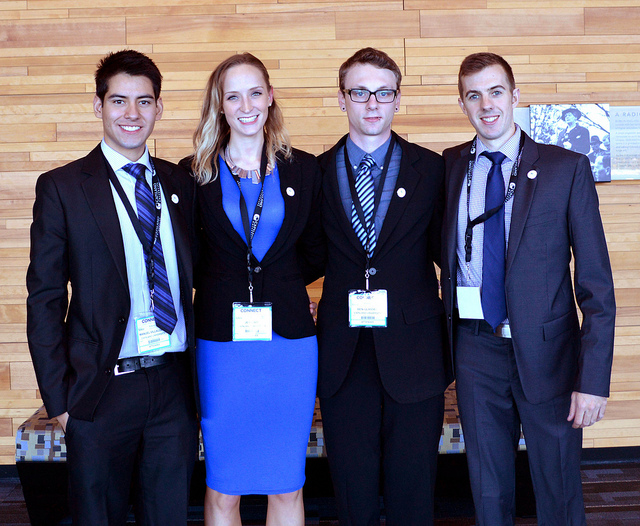
Tourism around the world is now worth over $1 trillion annually, and it’s a growing industry almost everywhere. Regions with the highest growth in terms of tourism dollars earned are the Americas, Europe, Asia and the Pacific, and Africa. Only the Middle East posted negative growth at the time of the report (UNWTO, 2012).
While North and South America are growing the fastest, Europe continues to lead the way in terms of overall percentage of dollars earned (UNWTO, 2012):
- Europe (45%)
- Asia and the Pacific (28%)
- North and South America (19%)
- Middle East (4%)
Global industry growth and high receipts are expected to continue. In its August 2014 expenditure barometer, the UNWTO found worldwide visitation had increased by 22 million people in the first half of the year over the previous year, to reach 517 million visits (UNWTO, 2014a). As well, the UNWTO’s Tourism 2020 Vision predicts that international arrivals will reach nearly 1.6 billion by 2020 . Read more about the Tourism 2020 Vision : http://www.e-unwto.org/doi/abs/10.18111/9789284403394
Social Impacts
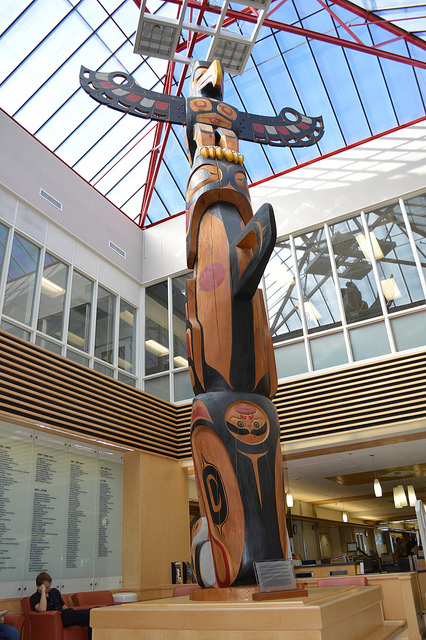
In addition to the economic benefits of tourism development, positive social impacts include an increase in amenities (e.g., parks, recreation facilities), investment in arts and culture, celebration of First Nations people, and community pride. When developed conscientiously, tourism can, and does, contribute to a positive quality of life for residents.
However, as identified by the United Nations Environment Programme (UNEP, 2003a), negative social impacts of tourism can include:
- Change or loss of indigenous identity and values
- Culture clashes
- Physical causes of social stress (increased demand for resources)
- Ethical issues (such as an increase in sex tourism or the exploitation of child workers)
Some of these issues are explored in further detail in Chapter 12, which examines the development of Aboriginal tourism in British Columbia.
Environmental Impacts
Tourism relies on, and greatly impacts, the natural environment in which it operates. Even though many areas of the world are conserved in the form of parks and protected areas, tourism development can have severe negative impacts. According to UNEP (2003b), these can include:
- Depletion of natural resources (water, forests, etc.)
- Pollution (air pollution, noise, sewage, waste and littering)
- Physical impacts (construction activities, marina development, trampling, loss of biodiversity)
The environmental impacts of tourism can reach outside local areas and have an effect on the global ecosystem. One example is increased air travel, which is a major contributor to climate change. Chapter 10 looks at the environmental impacts of tourism in more detail.
Whether positive or negative, tourism is a force for change around the world, and the industry is transforming at a staggering rate. But before we delve deeper into our understanding of tourism, let’s take a look at the development of the sector in our own backyard.
Canada Overview
Origins of tourism in canada.
Tourism has long been a source of economic development for our country. Some argue that as early as 1534 the explorers of the day, such as Jacques Cartier, were Canada’s first tourists (Dawson, 2004), but most agree the major developments in Canada’s tourism industry followed milestones in the transportation sector: by rail, by car, and eventually, in the skies.
Railway Travel: The Ties That Bind

The dawn of the railway age in Canada came midway through the 19th century. The first railway was launched in 1836 (Library and Archives Canada, n.d.), and by the onset of World War I in 1914, four railways dominated the Canadian landscape: Canadian Pacific Railway (CPR), Canadian Northern Railway (CNOR), the Grand Trunk Railway (GTR), and the Grand Trunk Pacific (GTP). Unfortunately, their rapid expansion soon brought the last three into near bankruptcy (Library and Archives Canada, n.d.).
In 1923, these three rail companies were amalgamated into the Canadian National Railway (CNR), and together with the CPR, these trans-continentals dominated the Canadian travel landscape until other forms of transportation became more popular. In 1978, with declining interest in rail travel, the CPR and CNR were forced to combine their passenger services to form VIA Rail (Library and Archives Canada, n.d.).
The Rise of the Automobile
The rising popularity of car travel was partially to blame for the decline in rail travel, although it took time to develop. When the first cross-country road trip took place in 1912, there were only 16 kilometres of paved road across Canada (MacEachern, 2012). Cars were initially considered a nuisance, and the National Parks Branch banned entry to automobiles, but later slowly began to embrace them. By the 1930s, some parks, such as Cape Breton Highlands National Park, were actually created to provide visitors with scenic drives (MacEachern, 2012).
It would take decades before a coast-to-coast highway was created, with the Trans-Canada Highway officially opening in Revelstoke in 1962. When it was fully completed in 1970, it was the longest national highway in the world, spanning one-fifth of the globe (MacEachern, 2012).
Early Tourism Promotion
As early as 1892, enterprising Canadians like the Brewsters became the country’s first tour operators, leading guests through areas such as Banff National Park (Brewster Travel Canada, 2014). Communities across Canada developed their own marketing strategies as transportation development took hold. For instance, the town of Maisonneuve in Quebec launched a campaign from 1907 to 1915 calling itself “Le Pittsburg du Canada.” And by 1935 Quebec was spending $250,000 promoting tourism, with Ontario, New Brunswick, and Nova Scotia also enjoying established provincial tourism bureaus (Dawson, 2004).
National Airlines
Our national airline, Air Canada, was formed in 1937 as Trans-Canada Air Lines. In many ways, Air Canada was a world leader in passenger aviation, introducing the world’s first computerized reservations system in 1963 ( Globe and Mail , 2014). Through the 1950s and 1960s, reduced airfares saw increased mass travel. Competitors including Canadian Pacific (which became Canadian Airlines in 1987) began to launch international flights during this time to Australia, Japan, and South America ( Canadian Geographic, 2000). By 2000, Air Canada was facing financial peril and forced to restructure. A numbered company, owned in part by Air Canada, purchased 82% of Canadian Airline’s shares, with the result of Air Canada becoming the country’s only national airline ( Canadian Geographic, 2000).
Parks and Protected Areas
A look at the evolution of tourism in Canada would be incomplete without a quick study of our national parks and protected areas. The official conserving of our natural spaces began around the same time as the railway boom, and in 1885 Banff was established as Canada’s first national park. By 1911, the Dominion Forest Reserves and Parks Act created the Dominion Parks Branch, the first of its kind in the world (Shoalts, 2011).
The systemic conservation and celebration of Canada’s parks over the next century would help shape Canada’s identity, both at home and abroad. Through the 1930s, conservation officers and interpreters were hired to enhance visitor experiences. By 1970, the National Park System Plan divided Canada into 39 regions, with the goal of preserving each distinct ecosystem for future generations. In 1987, the country’s first national marine park was established in Ontario, and in the 20 years that followed, 10 new national parks and marine conservation areas were created (Shoalts, 2011).
The role of parks and protected areas in tourism is explored in greater detail in Chapter 5 (recreation) and Chapter 10 (environmental stewardship).
Global Shock and Industry Decline
As with the global industry, Canada’s tourism industry was impacted by world events such as the Great Depression and the World Wars.
More recently, global events such as 9/11, the SARS outbreak, and the war in Iraq took their toll on tourism receipts. Worldwide arrivals to Canada dropped 1% to 694 million in 2003, after three years of stagnant growth. In 2005, spending reached $61.4 billion with domestic travel accounting for 71% (Government of Canada, 2006).
Tourism in Canada Today
In 2011, tourism created $78.8 billion in total economic activity and 603,400 jobs. Tourism accounted for more of Canada’s gross domestic product (GDP) than agriculture, forestry, and fisheries combined (Tourism Industry Association of Canada, 2014).
Spotlight On: The Tourism Industry Association of Canada (TIAC)
Founded in 1930 and based in Ottawa, the Tourism Industry Association of Canada (TIAC) is the national private-sector advocate for the industry. Its goal is to support policies and programs that help the industry grow, while representing over 400 members including airports, concert halls, festivals and events, travel services providers, and businesses of all sizes. For more information, visit the Tourism Industry Association of Canada’s website : http://tiac.travel/About.html
Unfortunately, while overall receipts from tourism appear healthy, and globally the industry is growing, according to a recent report, Canada’s historic reliance on the US market (which traditionally accounts for 75% of our market) is troubling. Because three out of every four international visitors to Canada originates in the United States, the 55% decline in that market since 2000 is being very strongly felt here. Many feel the decline in American visitors to Canada can be attributed to tighter passport and border regulations, the economic downturn (including the 2008 global economic crisis), and a stronger Canadian dollar (TIAC, 2014).
Despite disappointing numbers from the United States, Canada continues to see strong visitation from the United Kingdom, France, Germany, Australia, and China. In 2011, we welcomed 3,180,262 tourists from our top 15 inbound countries (excluding the United States). Canadians travelling domestically accounted for 80% of tourism revenues in the country, and TIAC suggested that a focus on rebounding US visitation would help grow the industry (TIAC, 2014).
Spotlight On: The Canadian Tourism Commission
Housed in Vancouver, Destination Canada , previously the Canadian Tourism Commission (CTC), is responsible for promoting Canada in several foreign markets: Australia, Brazil, China, France, Germany, India, Japan, Mexico, South Korea, the United Kingdom, and the United States. It works with private companies, travel services providers, meeting professionals, and government organizations to help leverage Canada’s tourism brand, Canada. Keep Exploring . It also conducts research and has a significant image library (Canadian Tourism Commission, 2014). For more information, visit Destination Canada website : http://en.destinationcanada.com/about-ctc.
As organizations like TIAC work to confront barriers to travel, the Canadian Tourism Commission (CTC) is active abroad, encouraging more visitors to explore our country. In Chapter 8, we’ll delve more into the challenges and triumphs of selling tourism at home and abroad.
The great news for British Columbia is that once in Canada, most international visitors tend to remain in the province they landed in, and BC is one of three provinces that receives the bulk of this traffic (TIAC, 2012). In fact, BC’s tourism industry is one of the healthiest in Canada today. Let’s have a look at how our provincial industry was established and where it stands now.
British Columbia Overview
Origins of tourism in bc.
As with the history of tourism in Canada, it’s often stated that the first tourists to BC were explorers. In 1778, Captain James Cook touched down on Vancouver Island, followed by James Douglas in 1842, a British agent who had been sent to find new headquarters for the Hudson’s Bay Company, ultimately choosing Victoria. Through the 1860s, BC’s gold rush attracted prospectors from around the world, with towns and economies springing up along the trail (PricewaterhouseCoopers, 2009).
Railway Travel: Full Steam Ahead!
The development of BC’s tourism industry began in earnest in the late 1800s when the CPR built accommodation properties along itsnewly completed trans-Canada route, capturing revenues from overnight stays to help alleviate their increasing corporate debt. Following the 1886 construction of small lodges at stops in Field, Rogers Pass, and Fraser Canyon, the CPR opened the Hotel Vancouver in May 1887 (Dawson, 2004).
As opposed to Atlantic Canada, where tourism promotion centred around attracting hunters and fishermen for a temporary infusion of cash, in British Columbia tourism was seen as a way to lure farmers and settlers to stay in the new province. Industry associations began to form quickly: the Tourist Association of Victoria (TAV) in February 1902, and the Vancouver Tourist Association in June of the same year (Dawson, 2004).
Many of the campaigns struck by these and other organizations between 1890 and 1930 centred on the province’s natural assets, as people sought to escape modern convenience and enjoy the environment. A collaborative group called the Pacific Northwest Travel Association (BC, Washington, and Oregon) promoted “The Pacific Northwest: The World’s Greatest Out of Doors,” calling BC “The Switzerland of North America.” Promotions like these seemed to have had an effect: in 1928, over 370,000 tourists visited Victoria, spending over $3.5 million (Dawson, 2004).
The Great Depression and World War II
As the world’s economy was sent into peril during the Great Depression in the 1930s, tourism was seen as an economic solution. A newly renamed Greater Victoria Publicity Bureau touted a “100 for 1” multiplier effect of tourism spending, with visitor revenues accounting for around 13.5% of BC’s income in 1930. By 1935, an organization known as the TTDA (Tourist Trade Development Association of Victoria and Vancouver Island) looked to create a more stable industry through strategies to increase visitors’ length of stay (Dawson, 2004).
In 1937, the provincial Bureau of Industrial and Tourist Development (BITD) was formed through special legislation with a goal of increasing tourist traffic. By 1938, the organization changed its name to the British Columbia Government Travel Bureau (BCGTB) and was granted a budget increase to $105,000. This was soon followed by an expansion of the BC Tourist Council designed to solicit input from across the province. And in 1939, Vancouver welcomed the King and Queen of England and celebrated the opening of the Lions Gate Bridge, activities that reportedly bolstered tourism numbers (Dawson, 2004).
The December 1941 Japanese attack on Pearl Harbor in Hawaii had negative repercussions for tourism on the Pacific Rim and was responsible for an era of decreased visitation to British Columbia, despite attempts by some to market the region as exciting. From 1939 to 1943, US visits to Vancouver (measured at the border) dropped from over 307,000 to approximately 183,600. Just two years later, however, that number jumped to 369,250, the result of campaigns like the 1943 initiative aimed at Americans that marketed BC as “comrades in war” (Dawson, 2004).
Post-War Rebound
We, with all due modesty, cannot help but claim that we are entering British Columbia’s half-century, and cannot help but observe that B.C. also stands for BOOM COUNTRY. – Phil Gagliardi, BC Minister of Highways, 1955 (Dawson, 2004, p.190)
A burst of post-war spending began in 1946, and although short-lived, was supported by steady government investment in marketing throughout the 1950s. As tourism grew in BC, however, so did competition for US dollars from Mexico, the Caribbean, and Europe. The decade that followed saw an emphasis on promoting BC’s history, its “Britishness,” and a commodification of Aboriginal culture. The BCGTB began marketing efforts to extend the travel season, encouraging travel in September, prime fishing season. It also tried to push visitors to specific areas, including the Lower Fraser Valley, the Okanagan-Fraser Canyon Loop, and the Kamloops-Cariboo region (Dawson, 2004).

In 1954, Vancouver hosted the British Empire Games, investing in the construction of Empire Stadium. A few years later, an increased emphasis on events and convention business saw the Greater Vancouver Tourist Association change its name in 1962 to the Greater Vancouver Visitors and Convention Bureau (PricewaterhouseCoopers, 2009).
The ski industry was also on the rise: in 1961, the lodge and chairlift on Tod Mountain (now Sun Peaks) opened, and Whistler followed suit five years later (PricewaterhouseCoopers, 2009). Ski partners became pioneers of collaborative marketing in the province with the foundation of the Ski Marketing Advisory Committee (SMAC) supported by Tod Mountain and Big White, evolving into today’s Canada’s West Ski Area Association (Magnes, 2010). This pioneer spirit was evident across the ski sector: the entire sport of heliskiing was invented by Hans Gosmer of BC’s Canadian Mountain Holidays, and today the province holds 90% of the world’s heliskiing market share (McLeish, 2014).
The concept of collaboration extended throughout the province as innovative funding structures saw the cost of marketing programs shared between government and industry in BC. These programs were distributed through regional channels (originally eight regions in the province), and considered “the most constructive and forward looking plan of its kind in Canada” (Dawson 2004, p.194).
Tourism in BC continued to grow through the 1970s. In 1971, the Hotel Room Tax Act was introduced, allowing for a 5% tax to be collected on room nights with the funds collected to be put toward marketing and development. By 1978, construction had begun on Whistler Village, with Blackcomb Mountain opening two years later (PricewaterhouseCoopers, 2009). Funding programs in the late 1970s and early 1980s such as the Canada BC Tourism Agreement (CBCTA) and Travel Industry Development Subsidiary Agreement (TIDSA) allowed communities to invest in projects that would make them more attractive tourism destinations. In the mountain community of Kimberley, for instance, the following improvements were implemented through a $3.1 million forgivable loan: a new road to the ski resort, a covered tennis court, a mountain lodge, an alpine slide, and nine more holes for the golf course (e-Know, 2011).
Around the same time, the “Super, Natural British Columbia” brand was introduced, and a formal bid was approved for Vancouver to host a fair then known as Transpo 86 (later Expo 86). Tourism in the province was about to truly take off.
Expo 86 and Beyond
By the time the world fair Expo 86 came to a close in October 1986, it had played host to 20,111,578 guests. Infrastructure developments, including rapid rail, airport improvements, a new trade and convention centre at Canada Place (with a cruise ship terminal), and hotel construction, had positioned the city and the province for further growth (PricewaterhouseCooopers, 2009). The construction and opening of the Coquihalla Highway through to 1990 enhanced the travel experience and reduced travel times to vast sections of the province (Magnes, 2010).
Take a Closer Look: The Value of Tourism
Tourism Vancouver Island, with the support of many partners, has created a website that directly addresses the value of tourism in the region. The site looks at the economics of tourism, social benefits of tourism, and a “what’s your role?” feature that helps users understand where they fit in. Explore the Tourism Vancouver Island website : http://valueoftourism.ca/.
By 2000, Vancouver International Airport (YVR) was named number one in the world by the International Air Transport Association’s survey of international passengers. Five years later, the airport welcomed a record 16.4 million passengers (PricewaterhouseCoopers, 2009).
Going for Gold

In 2003, the International Olympic Committee named Vancouver/Whistler as the host city for the 2010 Olympic and Paralympic Winter Games. Infrastructure development followed, including the expansion of the Sea-to-Sky Highway, the creation of Vancouver Convention Centre West, and the construction of the Canada Line, a rapid transport line connecting the airport with the city’s downtown.
As BC prepared to host the Games, its international reputation continued to grow. Vancouver was voted “Best City in the Americas” by Condé Nast Traveller magazine three years in a row. Kelowna was named “Best Canadian Golf City” by Canada’s largest golf magazine, and BC was named the “Best Golf Destination in North America” by the International Association of Golf Tour Operators. Kamloops, known as Canada’s Tournament City, hosted over 100 sports tournaments that same year, and nearby Sun Peaks Resort was named the “Best Family Resort in North America” by the Great Skiing and Snowboarding Guide in 2008 (PricewaterhouseCoopers, 2009).
By the time the Vancouver 2010 Olympic and Paralympic Games took place, over 80 participating countries, 6,000 athletes, and 3 billion viewers put British Columbia on centre stage.
Spotlight On: Destination British Columbia
Destination BC is a Crown corporation founded in November 2012 by the Government of British Columbia. Its mandate includes marketing the province as a tourist destination (at home and around the world), promoting the development and growth of the industry, providing advice and recommendations to the tourism minister on related matters, and enhancing public awareness of tourism and its economic value to British Columbia (Province of British Columbia, 2013b).
Tourism in BC Today
Building on the momentum generated by hosting the 2010 Winter Olympic Games, tourism in BC remains big business. In 2012, the industry generated $13.5 billion in revenue.
The provincial industry is made up of over 18,000 businesses, the majority of which are SMEs (small to medium enterprises), and together they employ approximately 127,300 people (Tourism Industry Association of BC, 2014). It may surprise you to learn that in British Columbia, tourism provides more jobs than high tech, oil and gas, mining, and forestry (Porges, 2014).
Spotlight On: The Tourism Industry Association of BC
Founded in 1993 as the Council of Tourism Associations, today the Tourism Industry Association of BC (TIABC) is a not-for-profit trade association comprising members from private sector tourism businesses, industry associations, and destination marketing organizations (DMOs). Its goal is to ensure the best working environment for a competitive tourism industry. It hosts industry networking events and engages in advocacy efforts as “the voice of the BC tourism industry.” Students are encouraged to join TIABC to take advantage of their connections and receive a discount at numerous industry events. For more information, visit the Tourism Industry Association of BC’s website : http://www.tiabc.ca/student-membership
One of the challenges for BC’s tourism industry, it has long been argued, is fragmentation. Back in September 1933, an article in the Victoria Daily Times argued for more coordination across organizations in order to capitalize on what they saw as Canada’s “largest dividend payer” (Dawson, 2004). Today, more than 80 years later, you will often hear BC tourism professionals say the same thing.
On the other hand, some experts believe that the industry is simply a model of diversity, acknowledging that tourism is a compilation of a multitude of businesses, services, organizations, and communities. They see the ways in which these components are working together toward success, rather than focusing on friction between the groups.
Many communities are placing a renewed focus on educating the general public and other businesses about the value of tourism and the ways in which stakeholders work together. The following case study highlights this in more detail:
Take a Closer Look: Tourism Pays in Richmond, BC
The community of Richmond, BC, brings to life the far-reaching positive economic effects of tourism in action. Watch the short video called “Tourism Pays” to see what we mean!: http://vimeo.com/31624689

Throughout the rest of this textbook, you’ll have a chance to learn more about the history and current outlook for tourism in BC, with in-depth coverage of some of the triumphs and challenges we’ve faced as an industry. You will also learn about the Canadian and global contexts of the tourism industry’s development.
As we’ve seen in this chapter, tourism is a complex set of industries including accommodation, recreation and entertainment, food and beverage services, transportation, and travel services. It encompasses domestic, inbound, and outbound travel for business, leisure, or other purposes. And because of this large scope, tourism development requires participation from all walks of life, including private business, governmental agencies, educational institutions, communities, and citizens.
Recognizing the diverse nature of the industry and the significant contributions tourism makes toward economic and social value for British Columbians is important. There remains a great deal of work to better educate members of the tourism industry, other sectors, and the public about the ways tourism contributes to our province.
Given this opportunity for greater awareness, it is hoped that students like you will help share this information as you learn more about the sector. So let’s begin our exploration in Chapter 2 with a closer look at a critical sector: transportation.
- British Columbia Government Travel Bureau ( BCGTB) : the first recognized provincial government organization responsible for the tourism marketing of British Columbia
- Canadian Pacific Railway (CPR) : a national railway company widely regarded as establishing tourism in Canada and BC in the late 1800s and early 1900s
- Destination BC: the provincial destination marketing organization (DMO) responsible for tourism marketing and development in BC, formerly known as Tourism BC
- Destination Canada: the national government Crown corporation responsible for marketing Canada abroad, formerly known as the Canadian Tourism Commission (CTC)
- Destination marketing organization (DMO): also known as a destination management organization; includes national tourism boards, state/provincial tourism offices, and community convention and visitor bureaus
- Diversity: a term used by some in the industry to describe the makeup of the industry in a positive way; acknowledging that tourism is a diverse compilation of a multitude of businesses, services, organizations, and communities
- Fragmentation: a phenomenon observed by some industry insiders whereby the tourism industry is unable to work together toward common marketing and lobbying (policy-setting) objectives
- Hospitality: the accommodations and food and beverage industry groupings
- North American Industry Classification System (NAICS) : a way to group tourism activities based on similarities in business practices, primarily used for statistical analysis
- Tourism: the business of attracting and serving the needs of people travelling and staying outside their home communities for business and pleasure
- Tourism Industry Association of BC ( TIABC) : a membership-based advocacy group formerly known as the Council of Tourism Associations of BC (COTA)
- Tourism Industry Association of Canada (TIAC): the national industry advocacy group
- Tourist: someone who travels at least 80 kilometres from his or her home for at least 24 hours, for business or pleasure or other reasons; can be further classified as domestic, inbound, or outbound
- United Nations World Tourism Organization (UNWTO) : UN agency responsible for promoting responsible, sustainable, and universally accessible tourism worldwide
- List the three types of tourist and provide an example of each.
- What is the UNWTO? Visit its website, and name one recent project or study the organization has undertaken.
- List the five industry groups according to the North American Industry Classification System (NAICS). Using your understanding of tourism as an industry, create your own definition and classification of tourism. What did you add? What did you take out? Why?
- In 2011, how much money was generated by tourism worldwide? What percentage of this money was collected in Europe? Where was the least amount of money collected?
- According to UNEP, what are the four types of negative environmental tourism impact? For each of these, list an example in your own community.
- What major transportation developments gave rise to the tourism industry in Canada?
- Historically, what percentage of international visitors to Canada are from the United States? Why is this an important issue today?
- Name three key events in the history of BC tourism that resonate with you. Why do you find these events of interest?
- Watch the video in the “Take a Closer Look” feature on Richmond. Now think about the value of tourism in your community. How might this be communicated to local residents? List two ways you will contribute to communicating the value of tourism this semester.
- Choose one article or document from the reference list below and read it in detail. Report back to the class about what you’ve learned.
Case Study: Tourism – Canada’s Surprise Blind Spot
In a 2014 episode of the Voice of Canadian Business , the Canadian Chamber of Commerce’s podcast, host Mary Anne Carter sat down with Greg Klassen, the CTC’s president and CEO, and Michele Saran, executive director of Business Events Canada. Their discussion highlighted the reasons Canada is struggling to remain competitive within the sector, and underscores the role and impact Canada’s tourism industry has on the economy.Listen to the 14-minute podcast on tourism in Canada and answer the following questions: www.chamber.ca/media/pictures-videos/140407-podcast-tourism/
- Why are governments around the world starting to invest in tourism infrastructure? What does this mean for the competitive environment for Canada’s tourism product?
- How do we compare to the United States as a destination for business travel?
- According to Greg, why is the $200 million investment in Brand USA a “double-edged sword” for tourism in Canada? What is beneficial about this? Why does it make things more difficult?
- What is the relationship between tourism and people’s understanding of a country’s image?
- What ranking is Canada’s brand? What other industries are affected by this brand?
- Describe one activity the CTC participates in to sell Canadian tourism product abroad.
- Name two “sectors of excellence” for Canada. Why is the CTC focussing their business events sales strategies on these industries?
- What does the CTC consider to be the benefits of Vancouver hosting the 2014 and 2015 TED conferences?
Brewster Travel Canada. (2014). About Us – Brewster History . Retrieved from http://www.brewster.ca/corporate/about-brewster/brewster-history/
British Columbia Ministry of Jobs, Tourism and Skills Training . (2013a). BC Stats: Industry Classification . Retrieved from http://www.bcstats.gov.bc.ca/StatisticsBySubject/BusinessIndustry/IndustryClassification.aspx
British Columbia Ministry of Jobs, Tourism and Skills Training. (2013b). Bill 3 – 2013: Destination BC Corp Act . Retrieved from https://www.leg.bc.ca/39th5th/1st_read/gov03-1.htm
Canadian Geographic . (2000, September). Flying through time: Canadian aviation history . Retrieved from http://www.canadiangeographic.ca/magazine/so00/aviation_history.asp
Canadian Tourism Commission. (2014). About the CTC. Retrieved from http://en-corporate.canada.travel/about-ctc
Chaney, Edward. (2000). The evolution of the grand tour: Anglo-Italian cultural relations since the Renaissance . Portland OR: Routledge.
Cox & Kings. (2014). About us – History. Retrieved from http://www.coxandkings.co.uk/aboutus-history
Dawson, Michael. (2004). Selling British Columbia: Tourism and consumer culture, 1890-1970 . Vancouver, BC: UBC Press.
Discover Hospitality. (2015). What is hospitality? Retrieved from http://discoverhospitality.com.au/what-is-hospitality/
e-Know. (2011, November). Ogilvie’s past in lock step with last 50 years of Kimberley’s history. Retrieved from www.e-know.ca/news/ogilvie’s-past-in-lock-step-with-last-50-years-of-kimberley’s-history/
Expedia, Inc. (2013). Expedia: Annual report 2013. [PDF] Retrieved from http://files.shareholder.com/downloads/EXPE/3546131959x0x750253/48AF365A-F894-4E9C-8F4A-8AB11FEE8D2A/EXPE_2013_Annual_Report.PDF
Flightglobal. (2002). Sixty years of the jet age. Retrieved from http://www.flightglobal.com/features/jet-age/
Globe and Mail, The. (2014, March 28). Ten things you don’t know about Air Canada. Retrieved from http://www.theglobeandmail.com/life/travel/travel-news/10-things-you-likely-dont-know-about-air-canada/article17725796/?page=all
Government of Canada. (2006). Building a national tourism strategy. [PDF] Retrieved from https://www.ic.gc.ca/eic/site/034.nsf/vwapj/tourism_e.pdf/$FILE/tourism_e.pdf
Government of Canada. (2013, July 5). Appendix E: Tourism industries in the human resource module . Retrieved from http://www.statcan.gc.ca/pub/13-604-m/2013072/appe-anne-eng.htm
Griffiths, Ralph, Griffiths, G. E. (1772). Pennant’s tour in Scotland in 1769. The Monthly Review; or, Literary Journal XLVI : 150 . Retrieved from Google Books .
Gyr, Ueli. (2010, December 3). The history of tourism: Structures on the path to modernity. European History Online (EHO). Retrieved from http://ieg-ego.eu/en/threads/europe-on-the-road/the-history-of-tourism
Latin definition for hospes, hospitis. (2014).In Latdict – Latin Dictionary and Grammar Resources . Retrieved from http://www.latin-dictionary.net/definition/22344/hospes-hospitis
Library and Archives Canada. (n.d.). Ties that bind: Essay. A brief history of railways in Canada. Retrieved from http://www.collectionscanada.gc.ca/trains/021006-1000-e.html
LinkBC. (2008). Transforming communities through tourism: A handbook for community tourism champions. [PDF] Retrieved from http://linkbc.ca/siteFiles/85/files/TCTT.pdf
MacEachern, A. (2012, August 17). Goin’ down the road: The story of the first cross-Canada car trip. The Globe and Mail . Retrieved from http://www.theglobeandmail.com/news/national/goin-down-the-road-the-story-of-the-first-cross-canada-car-trip/article4487425/
McLeish. (2014, July 23). History of heliskiing in Canada. Retrieved from www.lastfrontierheli.com/news/1607/history-of-heliskiing-in-canada/
Magnes, W. (2010, May 26). The evolution of British Columbia’s tourism regions: 1970-2010 [PDF] . Retrieved from http://linkbc.ca/siteFiles/85/files/LinkBCMagnesPaper2011.pdf
Porges, R. (2014, September). Tell me something I don’t know: Promoting the value of tourism. Tourism Drives the Provincial Economy . Presentation hosted by the Tourism Industry Association of BC, Vancouver, BC.
PricewaterhouseCooopers, LLC. (2009). Opportunity BC 2020: Tourism sector. [PDF] Prepared for the BC Business Council. Retrieved from http://www.bcbc.com/content/558/2020_200910_Mansfield_Tourism.pdf
Shoalts, A. (2011, April). How our national parks evolved: From Grey Owl to Chrétien and beyond, 100 years of Parks Canada. Canadian Geographic . Retrieved from http://www.canadiangeographic.ca/magazine/apr11/national_parks_evolution.asp
Theobald, William F. (1998). Global Tourism (2nd ed.). Oxford, England: Butterworth–Heinemann, pp. 6-7.
Thomas Cook Group of Companies. (2014). Thomas Cook history. Retrieved from http://www.thomascook.com/thomas-cook-history/
Tourism Industry Association of BC. (2014). Value of tourism toolkit: Why focus on the value of tourism? Retrieved from http://www.tiabc.ca/value-of-tourism-toolkit
Tourism Industry Association of Canada. (2014, October 14). Travel industry poised to boost Canadian exports: US market and border efficiencies central to growth potential . Retrieved from http://tiac.travel/cgi/page.cgi/_zine.html/TopStories/Travel_Industry_Poised_to_Boost_Canadian_Exports_US_Market_and_Border_Efficiencies_Central_to_Growth_Potential
Tourism Industry Association of Canada, HLT Advisory. (2012). The Canadian tourism industry: A special report [PDF] . Retrieved from http://www.hlta.ca/reports/The_Canadian_Tourism_Industry_-_A_Special_Report_Web_Optimized_.pdf
United Nations and World Tourism Organization. (1995). Recommendations on tourism statistics. [PDF] Retrieved from http://unstats.un.org/unsd/newsletter/unsd_workshops/tourism/st_esa_stat_ser_M_83.pdf
United Nations Environment Programme. (2003a). Negatives Socio-cultural impacts from tourism . Retrieved from http://www.unep.org/resourceefficiency/Business/SectoralActivities/Tourism/FactsandFiguresaboutTourism/ImpactsofTourism/Socio-CulturalImpacts/NegativeSocio-CulturalImpactsFromTourism/tabid/78781/Default.aspx
United Nations Environment Programme. (2003b). Tourism’s three main impact areas. Retrieved from http://www.unep.org/resourceefficiency/Business/SectoralActivities/Tourism/TheTourismandEnvironmentProgramme/FactsandFiguresaboutTourism/ImpactsofTourism/EnvironmentalImpacts/TourismsThreeMainImpactAreas/tabid/78776/Default.aspx
United Nations World Tourism Organization. (2008). Understanding tourism: Basic glossary . Retrieved from http://media.unwto.org/en/content/understanding-tourism-basic-glossary
United Nations World Tourism Organization. (2012, May 7). International tourism receipts surpass US$ 1 trillion in 2011. Retrieved from http://media.unwto.org/en/press-release/2012-05-07/international-tourism-receipts-surpass-us-1-trillion-2011
United Nations World Tourism Organization. (2014a). UNWTO world tourism barometer, 12 [PDF] (1). Retrieved from http://dtxtq4w60xqpw.cloudfront.net/sites/all/files/pdf/unwto_barom14_04_august_excerpt_0.pdf
United Nations World Tourism Organization. (2014b). Who we are. Retrieved from http://www2.unwto.org/content/who-we-are-0
Attributions
Figure 1.1 Selkirk College and Nelson by LinkBC is used under a CC-BY 2.0 license.
Figure 1.2 Capilano University’s Team by LinkBC is used under a CC-BY 2.0 license.
Figure 1.3 Vancouver Island University by LinkBC is used under a CC-BY 2.0 license.
Figure 1.4 Canadian Pacific 4-4-0 A-2-m No 136 by Peter Broster is used under a CC-BY 2.0 license.
Figure 1.5 Vancouver Island University by LinkBC is used under a CC-BY 2.0 license.
Figure 1.6 Switzerland vs. Canada by s.yume is used under a CC-BY 2.0 license.
Figure 1.7 CTC’s Boardroom by LinkBC is used under a CC-BY 2.0 license.
Introduction to Tourism and Hospitality in BC Copyright © 2015 by Capilano University is licensed under a Creative Commons Attribution 4.0 International License , except where otherwise noted.
Share This Book
UN Tourism | Bringing the world closer
Share this content.
- Share this article on facebook
- Share this article on twitter
- Share this article on linkedin
UN Tourism and Hotelschool The Hague to Drive Innovation in Hospitality
- 23 Apr 2024
UN Tourism and Hotelschool The Hague, have agreed to partner around the development and execution of pioneering projects in the hospitality industry.
A new Memorandum of Understanding (MoU) aims to stimulate innovation and fresh ventures within the hospitality industry, promoting entrepreneurship and education while engaging in open innovation projects that can enhance the tourism industry, with a particular focus on hospitality. Currently, 20% of entrepreneurs of the UN Tourism Network are directly related to hospitality and are the most dynamic projects including a variety of stakeholders of the industry.
Building on the UN Tourism's established innovation network, this agreement will further facilitate connections between startups and potential investors, as well as promote knowledge and skills through joint events, communication channels, and media interactions. This partnership not only underlines a commitment to a more sustainable future for the industry but also signifies a shared commitment to providing inclusive opportunities and memorable global student experiences, demonstrated through Hotelschool The Hague's global Sustainable Hospitality Challenge .
Strong foundations for innovative future
Ms. Natalia Bayona, Executive Director of UN Tourism, expresses: "Unfortunately 90% of startups within the hospitality sector eventually do not succeed. A decent tourism education and knowledge of the hospitality sector is necessary to develop a disruptive and well-functioning product. Through our collaborative efforts, we aspire to alter this trajectory by offering a more robust foundation, fostering invaluable connections, and providing a conducive testbed for emerging startups. Given that technology now permeates 70% of tourism enterprises, it is imperative that these startups are seamlessly integrated into the ecosystem, connected with pertinent stakeholders, and afforded the opportunity to validate their solutions in real-world settings before embarking on a larger scale.
Ms. Regine von Stieglitz, President of the Board of Directors of Hotelschool The Hague says: "At Hotelschool The Hague, we provide our students with the perfect balance of theory, real-world experience and applied research to prepare them for a career in the hospitality industry. We develop leaders who shape our global industry and drive it to give back more than it takes. We are proud to join forces with UN Tourism. We fully embrace their vision to Foster Innovation in the Hospitality Industry. In fact, our Sustainable Hospitality Challenge is a student competition designed to enhance the evolution of sustainable practices in hospitality, aligning seamlessly with the objectives of UN Tourism."
Hotelschool The Hague, founded and funded by the hospitality industry in 1929, provides high-quality education and cutting-edge research in the field of international hospitality management, with an emphasis on the transformation of sustainability and digitalization and on developing students into sought-after hospitality graduates who excel in leadership roles worldwide.
- Download News Release on PDF
Related Content
Un tourism joins launch of ireland’s first sustainable ..., european committee of the regions and un tourism break ..., un tourism and croatia to establish research centre for..., un tourism launches tourism investment guidelines for a....

Hospitality Industry Outlook 2024
Sean Skellie

#1 Stability
Travel demand is likely to stabilize in 2024 benchmarking record occupancy and rate. Current trends indicate that the industry is reporting a decline in many markets for leisure travel (Thursday – Saturday as many consumers are getting out priced in the market), while group travel remains strong as Milwaukee will experience in 2024; with a slight increase in corporate bookings (Monday – Wednesday travel). The Industry will see 65+ percent occupancy overall and even higher ADR in 2024.
The hospitality industry has been witnessing a resurgence in various segments of travel. Group travel, in particular, has seen a steady rise. This trend has been fueled by a desire for shared experiences and reconnection after periods of travel restrictions.
Corporate travel is another positive indicator as businesses adapt to new work models post-pandemic, many are resuming business travel for meetings, conferences, and collaborations and the daily work schedule. This renewed activity not only benefits hotels, but also other sectors related to travel and hospitality.
#2 Labor Shortages
The hospitality industry’s labor issues are on track to persist in the coming year. According to the Washington Post , nearly 2 million hospitality and leisure jobs remain unfilled and this will likely continue into 2024.

#3 Price Increases for Rooms
In 2022 Room rates peaked over 2019 for the first time and 2023 will remain high or higher at the national level and for many U.S. Markets. Including Milwaukee.
#4 Use of AI increases
AI-powered chatbots and virtual assistants are already revolutionizing customer service and replacing staff in various industries, including the hotel sector. They offer benefits like:
- 24/7 Availability: Chatbots can provide immediate assistance to guests at any time, reducing wait times and ensuring support is available round the clock.
- Personalized Service: By analyzing guest preferences and past interactions, AI can offer personalized recommendations for dining, activities, or room preferences, enhancing the guest experience.
- Efficient Reservations: Chatbots can streamline the reservation process by handling bookings, modifications, and cancellations, making it convenient for both guests and staff.
- Quick Problem Resolution: They can efficiently address common guest queries or concerns, freeing up human staff to handle more complex issues.
As AI technology continues to advance, these capabilities will likely improve, providing even more seamless and tailored experiences for hotel guests. Yet, we are taking people out of the people/service business.
#5 Sustainability
The shift towards sustainability and social responsibility in the travel industry isn’t just trend anymore; it’s becoming a significant factor influencing consumer choices and group demands. Travelers are increasingly conscious of the environmental and social impacts of their journeys, and they’re actively seeking options that align with their values.
Hotels and travel companies that prioritize eco-friendly practices, support local communities, and demonstrate social responsibility are not only meeting ethical expectations but are also attracting a growing segment of conscientious consumers. This shift isn’t just about goodwill; it’s proving to be financially rewarding as it appeals to an audience that actively seeks out businesses committed to making a positive impact.

Hotel Development & Marketing Analysis,

A highly experienced network of independent hospitality consultants providing a diversity of consulting services and expert guidance to the Hotel/Resort, Food & Beverage, Commercial Foodservice, Club and Spa, Casino and Tourism industries.
Related Articles
Hospitality trend alert: and the hotel models that stand out, hidden strategies that propel hospitality b2b brands.

UN Tourism and Hotelschool The Hague to drive innovation in hospitality

Taking Action: Hospitality DEI Initiatives to Engage and Empower
Related courses.
You might also like:

Recipe for navigating the restaurant business opening

How revenue management systems are transforming hotels and resorts

Pricing strategies: leveraging bias and psychological tricks for success

The Mille Club: luxury demands the unexpected

How personalized upselling and cross-selling can transform your hotel’s bottom line

Join over 60,000 industry leaders.
Receive daily leadership insights and stay ahead of the competition.
Leading solution providers:

Haynes MarComs

Cayuga Hospitality Consultants

Book Me Bob

Bookboost AB

Understanding the Role of Stakeholders in Sustainability of Travel and Tourism Industry: Future Prospects
- Living reference work entry
- First Online: 12 December 2023
- Cite this living reference work entry

- Anukrati Sharma 2 &
- Shruti Arora 2
Part of the book series: Springer International Handbooks of Education ((SIHE))
13 Accesses
Without the support and dedication of stakeholders, success might seem improbable for any business or industry. Working together, stakeholders can make sure that travel and tourism has a positive impact on the economy, environment, and society. Properly involving stakeholders in the tourism industry could also result in better decision-making, increased cooperation, and a greater understanding of the industry’s effects. All parties involved in the planning of sustainable travel and tourism must be included, especially the local community. Despite not often having a direct connection to the project or even the industry, stakeholders are nonetheless influenced by the results. Future generations are frequently regarded as tourism stakeholders, including both visitors and residents. In order to maintain sustainability, the chapter explores the role of stakeholders in the travel and tourism sector. The goal of this study is to better understand how stakeholders’ perspectives might affect business decisions on the development of sustainable tourism initiatives at diverse tourist destinations. This research will focus on the role of stakeholders in the sustainability of the travel and tourism sector and future prospects through a review of the literature from the previous 15 years.
According to the authors, locals or the host community have a greater responsibility to preserve the local culture and to sustain it for the future of the region. This is based on a review of the literature that demonstrates how stakeholders, including national and local government, the host community, individual shops, professionals working in tourism, tourism educational centers, tourists, and destination management organizations, all enhance or limit progress in travel and tourism. A few other issues were also noted during the study, such as poor education, inadequate financing and publicity, and rapid changes in infrastructure and technology.
This is a preview of subscription content, log in via an institution to check access.
Access this chapter
Institutional subscriptions
Aas, C., Ladkin, A., & Fletcher, J. (2005). Stakeholder collaboration and heritage management. Annals of Tourism Research, 32 (1), 28–48. https://doi.org/10.1016/j.annals.2004.04.005
Article Google Scholar
Ali, F., Hussain, K., Nair, V., & Nair, P. K. (2017). Stakeholders’ perceptions & attitudes towards tourism development in a mature destination. Journal of Oral Science, 65 , 173–186.
Google Scholar
Amerta, I. M. (2017). The role of tourism stakeholders at Jasri tourism village development, Karangasem regency. International Journal of Social Sciences and Humanities (IJSSH), 1 (2), 20–28.
Andersson, T. D., & Getz, D. (2008). Stakeholder management strategies of festivals. Journal of Convention and Event Tourism, 9 (3), 199–220. https://doi.org/10.1080/15470140802323801
Becker, C. U. (2012). Sustainability ethics and sustainability research. https://doi.org/10.1007/978-94-007-2285-9 . Retrieved from https://jyu.finna.fi/PrimoRecord/pci.springer_s978-94-007-2285-9_272111
Boachie, W. K. (2012). Assessing sustainable development in the mining industry in Ghana: A question of corporate perspective. Journal of Economic and Sustainable Development, 3 (10), 113–119.
Bornhorst, T., Brent Ritchie, J. R., & Sheehan, L. (2010). Determinants of tourism success for DMOs & destinations: An empirical examination of stakeholders’ perspectives. Tourism Management, 31 (5), 572–589.
Bramwell, B., & Sharman, A. (1999). Collaboration in local tourism policymaking. Annals of Tourism Research, 26 (2), 392–415. https://doi.org/10.1016/S0160-7383(98)00105-4
Brown, D., Spillman, K., Lee, M.-Y., & Lu, Y. (2014). Factors influencing small tourism business performance: The case of Central Kentucky, United States. Journal of Hospitality Marketing & Management, 23 (7), 768–789. https://doi.org/10.1080/19368623.2014.883293
Butler, R., Hall, C., & Jenkins, J. (1999). Tourism and recreation in rural areas . Wiley.
Carroll, A. B., Brown, J. A., & Buchholtz, A. K. (2018). Business & society: Ethics, sustainability, and stakeholder management . Cengage.
Christie, I., Fernandes, E., Messerli, H., & Twining-Ward, L. (2014). Tourism in Africa: Harnessing tourism for growth and improved livelihoods . World Bank.
Crane, A., & Ruebottom, T. (2011). Stakeholder theory and social identity rethinking stakeholder identification. Journal of Business Ethics, 102 , 77–87.
Ford, R. C., Wang, Y., & Vestal, A. (2012). Power asymmetries in tourism distribution networks. Annals of Tourism Research., 39 (2), 755–779.
Freeman, E. (1984). Strategic management: A stakeholder approach . Pitman.
Freeman, R. E. (2010). Strategic management: A stakeholder approach . Cambridge University Press.
Book Google Scholar
Freeman, R. E., Harrison, J. S., & Zyglidopoulos, S. (2018). Stakeholder theory: Concepts and strategies . Cambridge University Press.
Getz, D. & Timur S. (2005). Stakeholder involvement in sustainable tourism: Balancing the voices. In Global tourism (pp. 230–247). Elsevier. https://doi.org/10.1016/b978-0-7506-7789-9.50019-4
Goeldner, R., & Ritchie, B. (2005). Tourism: Principles, practices, philosophies (9th ed.). Wiley.
Hall, C. M. (2008). Tourism planning: Policies, processes and relationships (2nd ed.). Pearson Education.
Hall, D., & Richards, G. (2000). Tourism and sustainable community development (pp. 20–35). https://doi.org/10.4324/9780203464915
Hamid, M. A., Isa, S. M., & Kiumarsi, S. (2020). Sustainable tourism practices and business performance from the tour operators’ perspectives. Anatolia, 32 , 1–10. https://doi.org/10.1080/13032917.2020.1830135
Hartley, N., & Wood, C. (2005). Public participation in environmental impact assessment – Implementing the Aarhus convention. Environmental Impact Assessment Review, 25 , 319–340.
Herlangga, E. R., & Basuni, S. (2019). Stakeholder management of Kawasan konservasi mangrove dan bekantan in Tarakan city. Jurnal Manajemen Hutan Tropika, 23 (5), 146–153. https://doi.org/10.7226/jtfm.25.3.146
Holden, A. (2013). Tourism, poverty, and development . Routledge.
Hopwood, B., Mellor, M., & O’Brien, G. (2005). Sustainable development: Mapping different approaches. Sustainable Development, 13 , 38–52.
Iazzi, A., Pizzi, S., Iaia, L., & Turco, M. (2020). Communicating the stakeholder engagement process: A cross-country analysis in the tourism sector. Corporate Social Responsibility and Environmental Management, 27 (4), 1642–1652.
IBEF Nov. (2022). Tourism and hospitality industry report. Retrieved from https://www.ibef.org/industry/indian-tourism-and-hospitality-industry-analysis-presentation#:~:text=In%20India%2C%20the%20industry's%20direct,US%24%2028.9%20billion%20in%202018
Inskeep, E. (1991). Tourism planning: An integrated and sustainable development approach . Wiley.
Jalim, J. (2018, May 29). What are the types of tourism? Retrieved from https://www.quora.com/What-are-the-types-of-tourism
Jamal, T. B., & Getz, D. (1995). Collaboration theory and community tourism planning. Annals of Tourism Research, 22 (1), 186–204. https://doi.org/10.1016/0160-7383(94)00067-3
Jovanović, S., & Ivana, I. L. I. Ć. (2016). Infrastructure as important determinant of tourism development in the countries of Southeast Europe. Eco Forum Journal, 5 (1), 288–294.
Kenawy, E., Osman, T., & Alshamndy, A. (2017). What are the main challenges impeding implementation of the spatial plans in Egypt using ecotourism development as an example? Social Sciences, 6 (3), 75. https://doi.org/10.3390/socsci6030075
Kuvan, Y., & Akan, P. (2012). Conflict and agreement in stakeholder attitudes: Residents’ and hotel managers’ views of tourism impacts and forest-related tourism development. Journal of Sustainable Tourism, 20 (4), 571–584. https://doi.org/10.1080/09669582.2011.617824
Landorf, C. (2009). Managing for sustainable tourism: A review of six cultural world heritage sites. Journal of Sustainable Tourism, 17 (1), 53–70.
Lim, J. S., & Greenwood, C. A. (2017). Communicating corporate social responsibility (CSR): Stakeholder responsiveness and engagement strategy to achieve CSR goals. Public Relations Review, 43 (4), 768–776.
Link BC. (2008). Transforming communities through tourism: A handbook for community tourism champions . Retrieved from http://linkbc.ca/siteFiles/85/files/TCTT.pdf
Ljungholm, D. (2014). The process of collaborative governing. Geopolitics, History and International Relations, 6 (2), 105–110. Retrieved from https://jyu.finna.fi/PrimoRecord/pci.proquest1626534498
Majid, Z. (2023, May). Kashmir tourism stakeholders upbeat about future of industry after G20 event. HD Deccan Herald . Retrieved from https://www.deccanherald.com/national/north-and-central/kashmir-tourism-stakeholders-upbeat-about-future-of-industry-after-g20-event-1222078.html . Accessed 25 July 2023.
McComb, E. J., Boyd, S., & Boluk, K. (2017). Stakeholder collaboration: A means to the success of rural tourism destinations? A critical evaluation of the existence of stakeholder collaboration within the Mournes, Northern Ireland. Tourism and Hospitality Research, 17 (3), 286–297. https://doi.org/10.1177/1467358415583738
Mkwizu, K. H. (2020). Digital marketing and tourism: Opportunities for Africa. International Hospitality Review, 34 (1), 5–12.
Moscardo, G. (2011). Exploring social representations of tourism planning: Issues for governance. Journal of Sustainable Tourism, 19 (4–5), 423–436. https://doi.org/10.1080/09669582.2011.558625
Muresan, I. C., Oroian, C. F., Harun, R., Arion, F. H., Porutiu, A., Chiciudean, G. O., Todea, A., & Lile, R. (2016). Local residents’ attitude toward sustainable rural tourism development. Sustainability, 8 , 100.
Musavengane, R., Tantoh, H. B., & Simatele, D. (2019). A comparative analysis of collaborative environmental management of natural resources in Sub-Saharan Africa: A study of Cameroon and South Africa. Journal of Asian and African Studies, 54 (4), 512–532.
Najdeska, K. A., & Rakicevik, G. (2012). Planning of sustainable tourism development. Procedia, Social and Behavioral Sciences, 44 (C), 210–220. https://doi.org/10.1016/j.sbspro.2012.05.022
Nicolaides, A. (2015). Tourism stakeholder theory in practice: Instrumental business grounds, fundamental normative demands or a descriptive application? African Journal of Hospitality, Tourism and Leisure, 4 (2), 1–27.
Nunkoo, R., & Smith, S. L. (2014). Trust, tourism development and planning . Routledge.
Parsa, H. G. (2015). Sustainability, social responsibility, and innovations in tourism and hospitality . Apple Academic Press.
Prell, C., Hubacek, K., Reed, M., Quinn, C., Jin, N., Holden, J., Burt, T., Kirby, M., Sendzimir, J., & Holden, J. (2007). If you have a hammer everything looks like a nail: Traditional versus participatory model building. Interdisciplinary Science Reviews, 32 , 263–282.
Ragas, M. W., & Roberts, M. S. (2009). Communicating corporate social responsibility and brand sincerity: A case study of chipotle Mexican grill’s “food with integrity” program. International Journal of Strategic Communication, 3 (4), 264–280. https://doi.org/10.1080/15531180903218697
Ruhanen, L. (2009). Stakeholder participation in tourism destination planning another case of missing the point? Tourism Recreation Research, 34 (3), 283–294. https://doi.org/10.1080/02508281.2009.11081603
Saidu-Kamara, V. (2016). Strategy for sustainable tourism in developing countries: A qualitative case study on Sierra Leone. Retrieved from https://jyu.finna.fi/PrimoRecord/pci.proquest1836800870
Sautter, E. T., & Leisen, B. (1999). Managing stakeholders, a tourism planning model. Annals of Tourism Research, 26 (2), 312–328. https://doi.org/10.1016/S0160-7383(98)00097-8
Southgate, C., & Sharpley, R. (2002). Tourism, development and the environment. In R. Sharpley & D. J. Telfer (Eds.), Tourism and development: Concepts and issues (pp. 231–262). Channel View Publications.
Swarbrooke, J. (2001). Sustainable tourism management (2nd ed.). CAB International.
Theodoulidis, B., Diaz, D., Cr, F., & Rancati, E. (2017). Exploring corporate social responsibility and financial performance through stakeholder theory in the tourism industries. Tourism Management, 62 , 173–188.
Tkaczynski, A., Rundle-Thiele, S. R., & Beaumont, N. (2009). Segmentation: A tourism stakeholder view. Tourism Management, 30 (2), 169–175. https://doi.org/10.1016/j.tourman.2008.05.010
Tuan, N. (2016). Stakeholder model application in tourism development in Cat Tien, Lam Dong. Journal of Advanced Research in Social Sciences and Humanities, 1 , 73–95.
Turker, N., Alaeddinoglu, F., & Can, A. S. (2016). The role of stakeholders in sustainable tourism development in Safranbolu, Turkey . HLST-Summer July 12–14, 2016, Kyoto, Japan (pp. 415–426). Kyoto.
UNWTO. (2019). International tourism highlights. 2019 Edition . Retrieved from https://www.e-unwto.org/doi/pdf/10.18111/9789284421152
Verdugos, C. M., & Agüera, O. F. (2013). Potencialidades ecoturísticas de la República Dominicana. TURyDES, Revista de Turismo y Desarrollo Local, 6 (14). http://www.eumed.net/rev/turydes/14/ecoturismo.html
Waayers, D., Lee, D., & Newsome, D. (2012). Exploring the nature of stakeholder collaboration: A case study of marine turtle tourism in the Ningaloo region, Western Australia. Current Issues in Tourism, 15 (7), 673–692. https://doi.org/10.1080/13683500.2011.631697
Waligo, V. M., Clarke, J., & Hawkins, R. (2013). Implementing sustainable tourism: A multi-stakeholder involvement management framework. Tourism Management, 36 , 342–353. https://doi.org/10.1016/j.tourman.2012.10.008
Waligo, V. M., Clarke, J., & Hawkins, R. (2014). The ‘leadership–stakeholder involvement capacity’ nexus in stakeholder management. Journal of Business Research, 67 (7), 1342–1352.
World Bank. (2020). Stakeholder engagement plan for emergency projects in response to COVID-19 . https://documents1.worldbank.org/curated/en/820461588370087737/pdf/Stakeholder-Engagement-Plan-SEP-Cote-dIvoire-COVID-19-StrategicPreparedness-and-Response-Project-SPRP-P173813.pdf
World Travel & Tourism Council. (2020). Economic impact of travel and tourism report . Retrieved from https://www.wttc.org/
Yilmaz, B. S., & Gunel, O. D. (2009). The importance of strategic stakeholder management in tourism sector: Research on probable applications. Tourismos, 4 (1), 97–108.
Yiu, L., Saner, R., & Filadoro, M. (2011). Mainstreaming tourism development in the least developed countries: Coherence and complementarity of policy instruments . KUONI.
Yodsuwan, C., & Butcher, K. (2012). Determinants of tourism collaboration member satisfaction in Thailand. Asia Pacific Journal of Tourism Research, 17 (1), 63–80. https://doi.org/10.1080/10941665.2011.613206
Download references
Author information
Authors and affiliations.
Department of Commerce & Management, University of Kota, Kota, Rajasthan, India
Anukrati Sharma & Shruti Arora
You can also search for this author in PubMed Google Scholar
Editor information
Editors and affiliations.
Dept. of Commerce and Management, University of Kota, Kota, Rajasthan, India
Anukrati Sharma
Rights and permissions
Reprints and permissions
Copyright information
© 2024 Springer Nature Singapore Pte Ltd.
About this entry
Cite this entry.
Sharma, A., Arora, S. (2024). Understanding the Role of Stakeholders in Sustainability of Travel and Tourism Industry: Future Prospects. In: Sharma, A. (eds) International Handbook of Skill, Education, Learning, and Research Development in Tourism and Hospitality. Springer International Handbooks of Education. Springer, Singapore. https://doi.org/10.1007/978-981-99-3895-7_44-1
Download citation
DOI : https://doi.org/10.1007/978-981-99-3895-7_44-1
Received : 29 July 2023
Accepted : 22 November 2023
Published : 12 December 2023
Publisher Name : Springer, Singapore
Print ISBN : 978-981-99-3895-7
Online ISBN : 978-981-99-3895-7
eBook Packages : Springer Reference Education Reference Module Humanities and Social Sciences Reference Module Education
- Publish with us
Policies and ethics
- Find a journal
- Track your research
- Value of Culinary Education
- Financing Your Education
- Austin Student Life
- Boulder Student Life
- Culinary & Pastry Careers
- Hospitality Careers
- Health & Wellness Careers
- Food Entrepreneurship
- Success Stories
- World of Food & Drink
- Recipes & Techniques
- Culinary Arts
- Baking & Pastry Arts
- Blog Search
- Financial Aid
- Career Services
- Online Culinary Arts Programs
- Austin Culinary Arts Programs
- Boulder Culinary Arts Programs
- Online Baking & Pastry Programs
- Austin Baking & Pastry Programs
- Boulder Baking & Pastry Programs
- Food Entrepreneurship Programs
- Plant-Based Programs
- Holistic Nutrition & Wellness Programs
- Hospitality & Restaurant Operations Management
- Enthusiast Cooking Classes
- Find Your Program
- Tuition & Fees
- Financial Aid Overview
- Federal Financial Aid Programs
- Scholarships & Grants
- GI Bill ® for Military & Veterans
- Contact Financial Aid
- New Student Checklist
- Military & Veterans
- High School Students
- International Students
- Student Stories
- Admissions Overview
- Application Process
- Open Houses & Events
- Schedule a Tour
- Student Housing
- Online Programs
- Austin, Texas Campus
- Boulder, Colorado Campus
- Our Chef Instructors
- Farm To Table ® Experience
- Accreditations
- Vision, Mission, & Core Values
- Alumni Profiles
- History & Timeline
- Request Information
- Student Login
- (855) 955-7555
- Search for:
What Is Food Tourism? A Guide to Culinary Career Opportunities
Foodie adventures and dream jobs await! Explore how you can combine culinary passion and travel with a career in food tourism.

Take the Culinary Career Survey
We’ve compiled a checklist of all of the essential questions into one handy tool: career options, culinary interest surveys, educational opportunities, and more.
Clicking the "Get the Survey Now" button constitutes your express request, and your express written consent, to be contacted by and to receive automated or pre-recorded call, texts, messages and/or emails from via phone, text, and/or emails by Auguste Escoffier School of Culinary Arts at the number(s)/email you provided, regarding furthering your education and enrolling. You understand that these calls , texts, messages and/or emails may be generated using an automated or pre-recorded technology. You are not required to agree to receive automated or pre-recorded calls, texts, messages or emails as a condition of enrolling at Escoffier. You can unsubscribe at any time or request removal of street address, phone number, email address via Escoffier website .
Listen to This Article:
Imagine your ideal vacation. Maybe you’re relaxing under a palm tree on a white sandy beach or backpacking through rugged mountains featuring breathtaking views. Or maybe you’re like a growing number of travelers who enjoy experiencing a new culture through unique dining experiences and locally sourced ingredients.
Picture unwinding in a private villa in the Napa Valley vineyards, partaking in private tastings, and indulging in local Meyer lemons and Dungeness crab. Food can serve as a powerful lens, allowing us to more fully experience new destinations, which is one reason food tourism is a growing trend.
According to some private-sector research, a majority of travelers research restaurants before heading out on vacation . But some travelers take it a step further. A recent report by the World Travel Association (WFTA) found that 34% of travelers select their destination based on food .
This growing interest in connecting travel and the culinary world raises the questions: What is food tourism and what careers exist in the industry?
What Is Food Tourism?
What are some examples of food tourism.
- Traveling to New Orleans to try authentic dishes and drinks like Creole Jambalaya, beignets, and a hurricane cocktail
- Visiting Italy, to indulge in pizza, pasta, and gelato the way it was meant to taste
- Staying in Spain, to experience heritage recipes for paella, tapas, and churros
- Venturing over to Japan, to experience sushi, ramen, and tempura made by locals
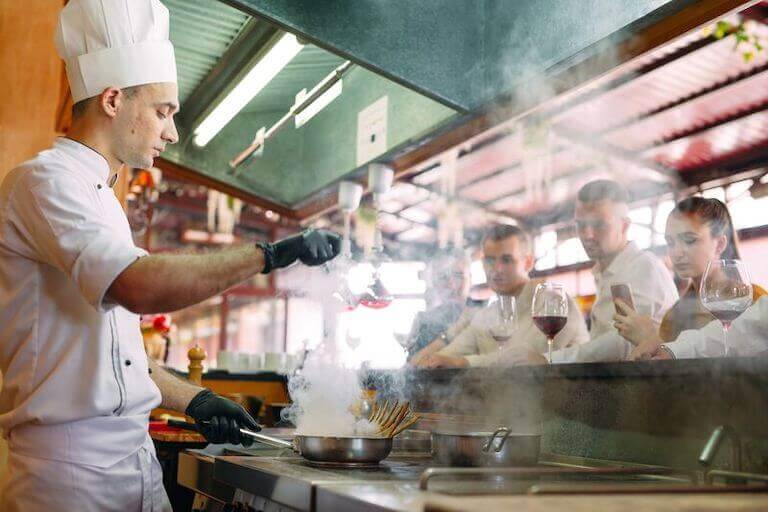
Tourists enjoy interacting with chefs as their meals are prepared.
Travelers are looking to learn more about the regions they travel to through food experiences such as farm-to-table tours and restaurants, trips through local markets, and interacting with the chef as their food is prepared. They’re looking for local flavors and specialties they can’t find anywhere else, which is creating unique opportunities for creative chefs.
Food tourism experiences can also help preserve traditional cooking methods and regional cuisines, ensuring their legacy lives on for future generations. It’s a win-win situation for locals and travelers alike.
Why Is Food Tourism so Popular?
While the term “foodie” arrived on the food scene in the 1980s, it began to gain steam in the 1990s when food television grew in popularity. The foodie community began to connect even more once the internet and social media made it easier to share and follow each others’ experiences and the works of celebrity chefs .

Food trucks grew in popularity along with the foodie scene.
In fact, the majority of Millennials and Gen Z would rather spend their money on experiences like traveling instead of saving for the future. In addition, they have become more interested in experiencing authentic culture as they travel instead of wanting to see landmarks or visit popular theme parks.
The younger generations want to move past sightseeing and see how the locals are living—and eating. Why visit a predictable amusement park when you could take a small catamaran to an island off the coast of Mexico where you can eat homemade tortillas prepared by the locals?
And it doesn’t appear to be a fading trend. The food tourism market is strong and expected to continue growing by 15.20% through 2033. With this in mind, it brings new and innovative opportunities for chefs looking to put a different spin on their careers.
Culinary Tourism Creates Exciting Career Opportunities
The increasing popularity of culinary tourism is creating unique opportunities for both chefs and food influencers . There are many ways you can combine your passion for food, culinary experiences, travel, or your local area into money-making opportunities.
Opportunities for Those Who Love to Travel
Do you want to see the world? Or do you have a favorite destination that you’d love to live in long-term or temporarily? There are many opportunities around the world for chefs and others passionate about cuisine in the food tourism industry. If you want to be part of it, here are some ideas for how you can combine your career and hobbies:
1. Partner with Tour Companies
You can partner with travel agencies and tour operators to create one-of-a-kind experiences for travelers. This could include taking groups to local farms and markets to purchase ingredients and educating them on the significance of the ingredients in the local culture throughout history. Escoffier’s Farm To Table Experience offers great examples of how local farming can influence culinary culture.

Food tourists are interested in learning more about the local food scene, including where to source ingredients, like the farmer’s market.
2. Cook for Guests as a Private Chef on a Yacht
Create a luxurious dining experience by working as a private chef on a yacht. You can personalize multi-course meals for private clients or charter guests while incorporating local ingredients from exotic destinations. You get the bonus of stunning ocean views day and night. Several professional organizations exist that can help you on your personal chef journey, including the United States Personal Chef Association and the American Personal & Private Chef Association (founded by friend of Escoffier Candy Wallace).
3. Join Adventure Groups as an Expedition Chef
If you enjoy trekking through the mountains, join an adventure tour company like Overland Cookery . You can prepare meals for hikers and campers throughout their journey. Or, you could prepare delicious meals for travelers to return to after an adventurous day of spotting animals on a South African safari. Get creative thinking about your favorite place to travel and how you could be a part of creating an unforgettable food experience for others.
4. Hit the Road as a Food Influencer
Professional chefs have a unique voice and experience to add to the world of food influencers. If you enjoy travel, you could spend your time traveling while learning about and sharing food experiences with others online. You can help foodies plan their next vacation by covering the best food to try and experiences to participate in throughout the world.
The Food Entrepreneurship Courses at Escoffier include classes in social media content development, food blogging, and hospitality marketing that can help you take the next step.
5. Provide Services as a Restaurant Consultant
Lend your culinary knowledge and experience to restaurants around the world. You can assist restaurants in menu development, improved food quality, and staff training. Become known as the expert in a specific culinary area and travel to teach others how they can do the same. Explore ways a degree in Hospitality and Restaurant Operations Management can help.

Opportunities for Those Who Want to Stay Local
You don’t have to travel to work in and support the world of culinary tourism if you want to stay close to home. There are plenty of opportunities, including the following, for chefs looking to stay local.
1. Host Cooking Classes
Host cooking classes to teach tourists about local culinary techniques and regional dishes. Educate participants on the differences in your local ingredients. Incorporate pieces of local history and storytelling throughout the experience to engage tourists and help them learn more about your area and culture.
2. Participate in Food Festivals
Food festivals , such as the South Beach Wine & Food Festival and Disney California Adventure Food & Wine Festival, are popular among foodies. Join a festival in your area or partner with other food experts to start a food festival to attract tourists. You can provide culinary demonstrations to showcase your skills and promote your region’s culinary heritage.

3. Work as a Private Chef
With the help of companies like Airbnb, many travelers enjoy staying at a house instead of a hotel or resort while traveling. You can help them enjoy an authentic experience by working as a private chef for their trip. You can prepare a lavish spread using local ingredients while customizing the menu for specific travelers.

Private chefs can help tourists enjoy authentic cuisine at every meal.
4. Food Tour Guide
Help take travelers past the tourist hotspots to find the best authentic dishes and culinary experiences the locals love in your city. Lead groups to the best restaurants, sharing what dishes will meet their needs. Take them on behind-the-scenes tours of the restaurants or create experiences where they can meet the Executive Chef.
5. Develop Local Food Tourism Opportunities
With the increase in food tourism, cities are working to create new experiences to help draw tourists. There are many ways you can partner with local government and business owners to put your city on the food tourism map. Here are some ideas to get you started:
- Create themed menus for restaurants in your local area.
- Collaborate with local producers, from farmers to cheesemakers and artisanal bakers, to source fresh local ingredients for your dishes.
- Offer special tasting events featuring local ingredients and specialties.
- Work as a food tourism advocate. Connect with other local chefs, restaurants, and food businesses to bring new culinary offerings to your area.
The food tourism industry is wide open. Look for ways to pair your culinary skills with other passions to create one-of-a-kind experiences for travelers from near and far.

Providing unique culinary experiences and behind-the-scenes experiences can draw tourists.
If the food tourism industry is calling your name, you can set yourself apart from other chefs by developing additional skills that will help you serve in these unique career opportunities.
Non-Culinary Skills for Success in Food Tourism
Food tourism is about more than just local ingredients and cooking. Outside of your culinary skills, the following skills can help you succeed in a career in the culinary tourism industry:
- Storytelling Skills : Creating the authentic experience tourists are looking for includes good communication skills and being a captivating storyteller. Share local heritage and cultural narratives throughout the culinary experience. Engage with people to share your local knowledge and answer their questions to create a personalized experience.
- Business Acumen : Understanding business principles such as marketing and promotion can help you attract customers to your culinary experience while understanding the numbers behind the business will help you price your offerings right.
- Cultural sensitivity : Food is deeply connected with local culture, and having cultural sensitivity helps you communicate local and historical traditions in a meaningful way.
Combining these skills can help you create one-of-a-kind experiences for travelers while establishing yourself in a career that you can enjoy personally and professionally. If you’re interested in starting your own business in the food tourism industry, explore how a food entrepreneurship program can help you get started.
How to Take the Next Step for a Career in Food Tourism
Food tourism is a travel trend that is here to stay. It provides transformative experiences for travelers, allowing them to immerse themselves in unique flavors, local culture, and regional traditions.
The travel landscape continues to evolve with the changing generations, creating new and exciting opportunities in the culinary and hospitality world. If you’re passionate about food and enjoy creating unique experiences along with delicious cuisine, a career in food tourism might be right for you. Contact us to learn more about how you can combine your interests and passions with an exciting career in culinary tourism.
CHECK OUT THESE ARTICLES NEXT!
- Career Options For Culinary School Graduates
- What Skills Do You Need for a Career in Hospitality and Tourism?
- How You Can Get a Job on a Cruise Ship
*Information may not reflect every student’s experience. Results and outcomes may be based on several factors, such as geographical region or previous experience.
Latest Articles
Table setting etiquette 101: a brief guide.
The right table setting is a great way to establish ambiance for your event or restaurant. Find out the proper way to set a table for basic, casual, or formal settings.
How to Butterfly Cut Meats and Poultry
Find out what a butterfly cut is, why it’s important, and the proper technique in this butterfly cutting guide.
“See as Much as You Can”: Chef Instructor Gregory Bonath’s Lifelong Embrace of Curiosity
With the support of family and mentors, Chef Gregory left his small town behind and embarked on a unique culinary career that has culminated at Escoffier.

Subscribe to the King of Chefs Blog
Get the King of Chefs email newsletter delivered to your inbox weekly. You'll get everything you need to know about culinary & pastry careers, food entrepreneurship, financing your culinary education, and more.
The Essential Culinary School Planner & Checklist

We’ve compiled a checklist of all of the essential questions into one handy workbook: Career options, academic plans, financing your education, and more.
Clicking the "Get the Workbook Now" button constitutes your express request, and your express written consent, to be contacted by and to receive automated or pre-recorded call, texts, messages and/or emails from via phone, text, and/or emails by Auguste Escoffier School of Culinary Arts at the number(s)/email you provided, regarding furthering your education and enrolling. You understand that these calls , texts, messages and/or emails may be generated using an automated or pre-recorded technology. You are not required to agree to receive automated or pre-recorded calls, texts, messages or emails as a condition of enrolling at Escoffier. You can unsubscribe at any time or request removal of street address, phone number, email address via Escoffier website .
We've detected unusual activity from your computer network
To continue, please click the box below to let us know you're not a robot.
Why did this happen?
Please make sure your browser supports JavaScript and cookies and that you are not blocking them from loading. For more information you can review our Terms of Service and Cookie Policy .
For inquiries related to this message please contact our support team and provide the reference ID below.

IMAGES
COMMENTS
The hospitality industry is a large subsection within the service industry and is comprised of four main areas: Food & beverage, travel & tourism, lodging, and recreation.As examples, the F&B category includes restaurants, bars, and food trucks; travel & tourism covers different forms of transportation and travel agencies; lodging varies from hotel resorts to hostels; recreation refers to ...
Hospitality and tourism are both related and separate industries. For instance, airline travel is considered as part of both the tourism and hospitality industries. Hospitality is a component of the tourism industry, as it provides services and amenities to tourists. However, tourism is a broader industry encompassing various sectors, including ...
What is the hospitality industry? The hospitality industry is a massive business sector. Casting a broad umbrella, it encompasses all economic and business activities that rely upon or contribute to travel and tourism. Hospitality-focused businesses like hotels and travel agencies contribute directly by providing essential services that enable ...
tourism, the act and process of spending time away from home in pursuit of recreation, relaxation, and pleasure, while making use of the commercial provision of services.As such, tourism is a product of modern social arrangements, beginning in western Europe in the 17th century, although it has antecedents in Classical antiquity.. Tourism is distinguished from exploration in that tourists ...
While tourism is the all-encompassing umbrella term for the activities and industry that create the tourist experience, the UNWTO (2020) defines travel as the activity of moving between different locations often for any purpose but more so for leisure and recreation (Hall & Page, 2006). On the other hand, hospitality can be defined as "the ...
The hospitality industry is a large subsection within the service industry and is comprised of four main areas: Food & beverage, travel & tourism, lodging, and recreation. As examples, the F&B ...
The hospitality industry is a broad category of fields within the service industry that includes lodging, food and beverage services, event planning, theme parks, travel agency, tourism, hotels, restaurants, nightclubs, and bars. Sectors.
Industry Definition. The travel and tourism sector comprises a wide range of products and services, including leisure and business travel, accommodation, food and drink services, and more. Some of ...
The tourism industry can make the most of available tech to draw customers, resolve existing pain points, and set the stage for a sustainable future. ... Alibaba's AI Labs and Alibaba Cloud technology with the goal of "leveraging cutting-edge tech to help transform the hospitality industry, one that keeps the sector current with the digital ...
Hospitality is a field that focuses on providing accommodations to visitors at hospitality-related industries, such as hotels, motels, restaurants, cruise ships, country clubs, casinos, and convention centers, while tourism is focused on providing quality attractions and events in order to entice tourists to come.
The hospitality industry spans across service industry sectors such as restaurants, hotels and the broader tourism industry (e.g. cruise ships). As one of the largest job creators and economic contributors, it is important for both customers and workers to understand the ins and outs of this dynamic industry.
The hospitality industry is a large subsection within the service industry and is comprised of four main areas: Food & beverage, travel & tourism, lodging, and recreation. As examples, the F&B ...
In its broadest sense, tourism is defined as when people travel and stay in places outside of their usual environment for less than one consecutive year for leisure, business, health, or other ...
The industry is important for travel, as hospitality and tourism workers help plan trips and make travel reservations, operate hotels and amusement parks, and guide tours. Jobs in this cluster were severely reduced during the pandemic due to travel bans as well as closures of restaurants and entertainment facilities.
Hospitality that benefits people and the planet. How will hotel companies improve the guest experience, create a happier workforce, and help fight climate change? Five of McKinsey's travel and hospitality experts—Margaux Constantin, Vik Krishnan, Matteo Pacca, Steve Saxon, and Caroline Tufft—envision the hotel industry of the 2030s.
Hotel management is a type of hospitality administration. You'll find that most hospitality businesses fall under one of five key categories: Food and beverage. Lodging. Meetings and events. Recreation. Travel and tourism Career paths in hospitality management A background in hospitality management may open a variety of job opportunities.
Travel and Tourism Satellite Account for 2018-2022 The travel and tourism industry—as measured by the real output of goods and services sold directly to visitors—increased 21.0 percent in 2022 after increasing 53.6 percent in 2021, according to the most recent statistics from BEA's Travel and Tourism Sate
Main Body. Chapter 1. History and Overview. Learning Objectives. Specify the commonly understood definitions of tourism and tourist. Classify tourism into distinct industry groups using North American Industry Classification Standards (NAICS) Define hospitality. Gain knowledge about the origins of the tourism industry.
Tourism and Hospitality Research (THR) is firmly established as an influential and authoritative, peer-reviewed journal for tourism and hospitality researchers and professionals. THR covers applied research in the context of Tourism and Hospitality in areas such as policy, planning, performance, development, management, strategy, operations, marketing and consumer behavior…
23 Apr 2024. UN Tourism and Hotelschool The Hague, have agreed to partner around the development and execution of pioneering projects in the hospitality industry. A new Memorandum of Understanding (MoU) aims to stimulate innovation and fresh ventures within the hospitality industry, promoting entrepreneurship and education while engaging in ...
The Industry will see 65+ percent occupancy overall and even higher ADR in 2024. The hospitality industry has been witnessing a resurgence in various segments of travel. Group travel, in particular, has seen a steady rise. This trend has been fueled by a desire for shared experiences and reconnection after periods of travel restrictions.
One of the most important economic sectors in many developed nations has been recognized as tourism. The World Travel and Tourism Council reports that in 2018, the travel and tourism industry grew by 3.9%, exceeding the global economy's annual growth rate of 3.2% for the eighth consecutive year.The industry has produced one in five jobs over the last 5 years, making travel and tourism the ...
Food tourists are interested in learning more about the local food scene, including where to source ingredients, like the farmer's market. 2. Cook for Guests as a Private Chef on a Yacht. Create a luxurious dining experience by working as a private chef on a yacht.
Recognizing the pivotal role of information and communication technologies (ICTs) in generating economic benefits within the tourism and hospitality industry, this research aimed to develop a comprehensive understanding of the economic impacts of ICTs through a systematic review of the literature published on this topic since 2000.
May 14, 2024 at 1:08 AM EDT. Qatar plans to liberalize its hospitality industry to build on the record number of tourists thronging the nation since it hosted the FIFA World Cup in 2022. "We ...
Abstract. The role of transformational leadership is vital in engaging employees to perform for the betterment of organization. This study intends to predict hospitality industry frontline managers work engagement, innovative work behavior, sustainable employability, and organizational citizenship behavior.
Learn how the Indian hotel industry is capitalizing on the rising interest in wellness tourism, offering spa facilities, yoga, and meditation sessions. Hospitality majors are planning to capitalise on wellness tourism as they expect it to see further growth and consider it less impacted by economic downturns.